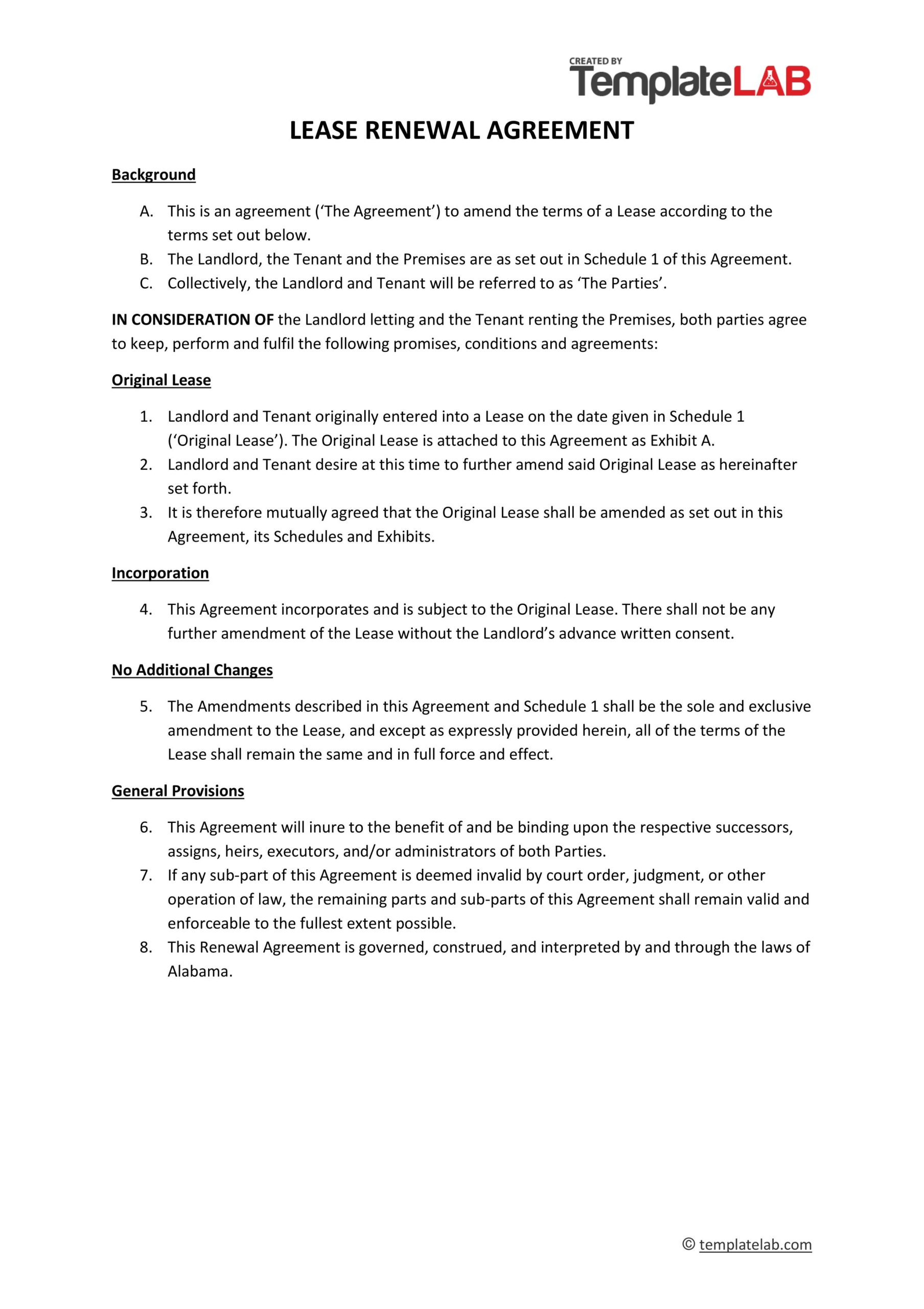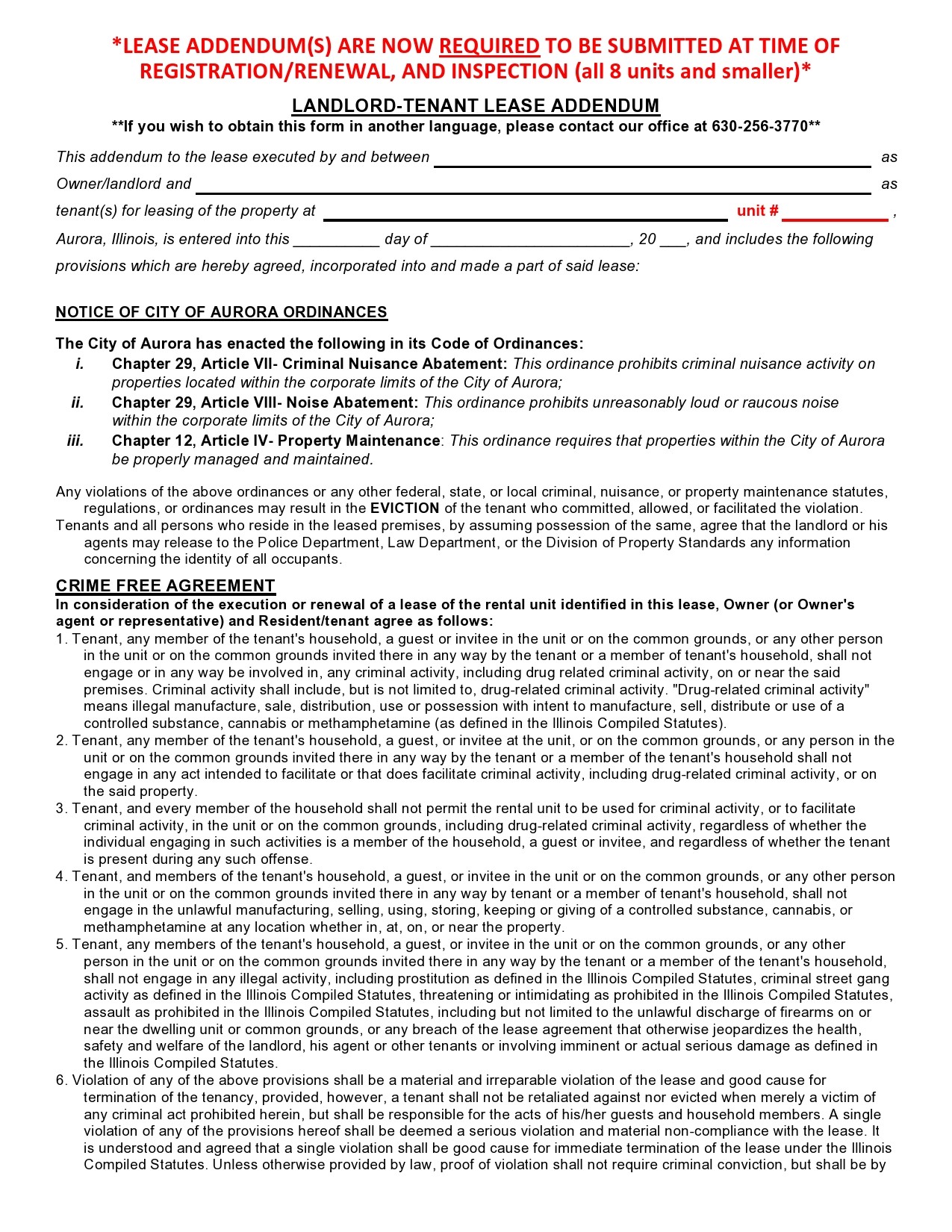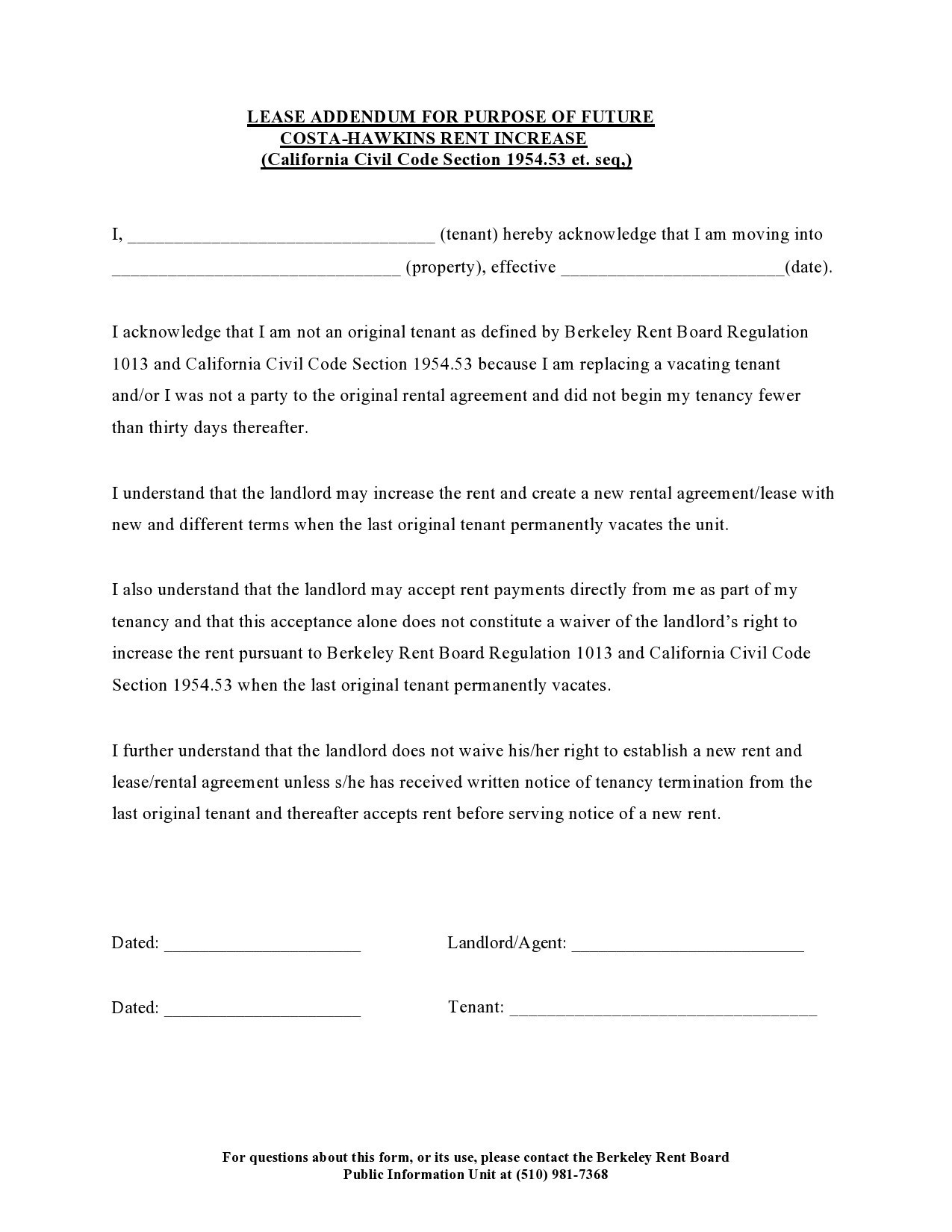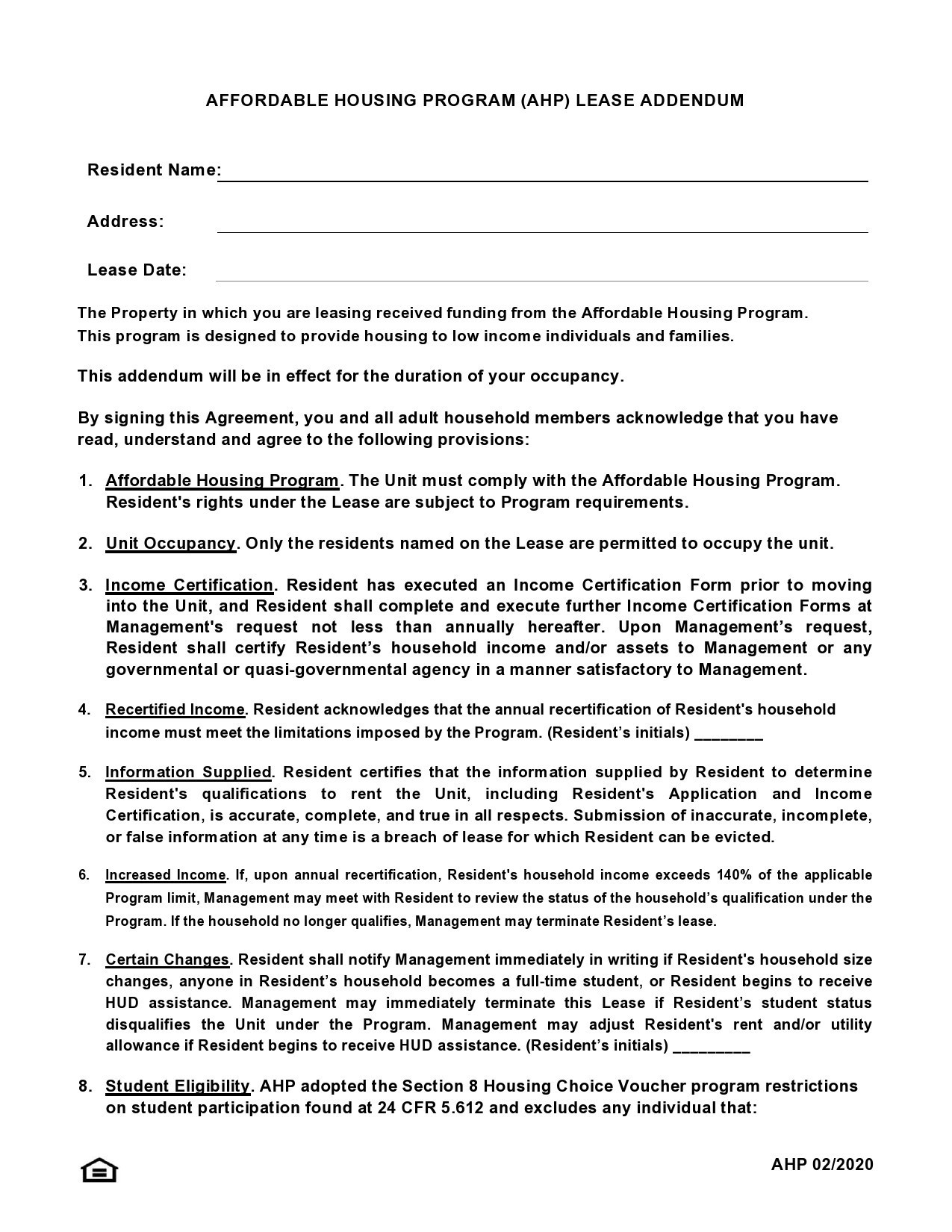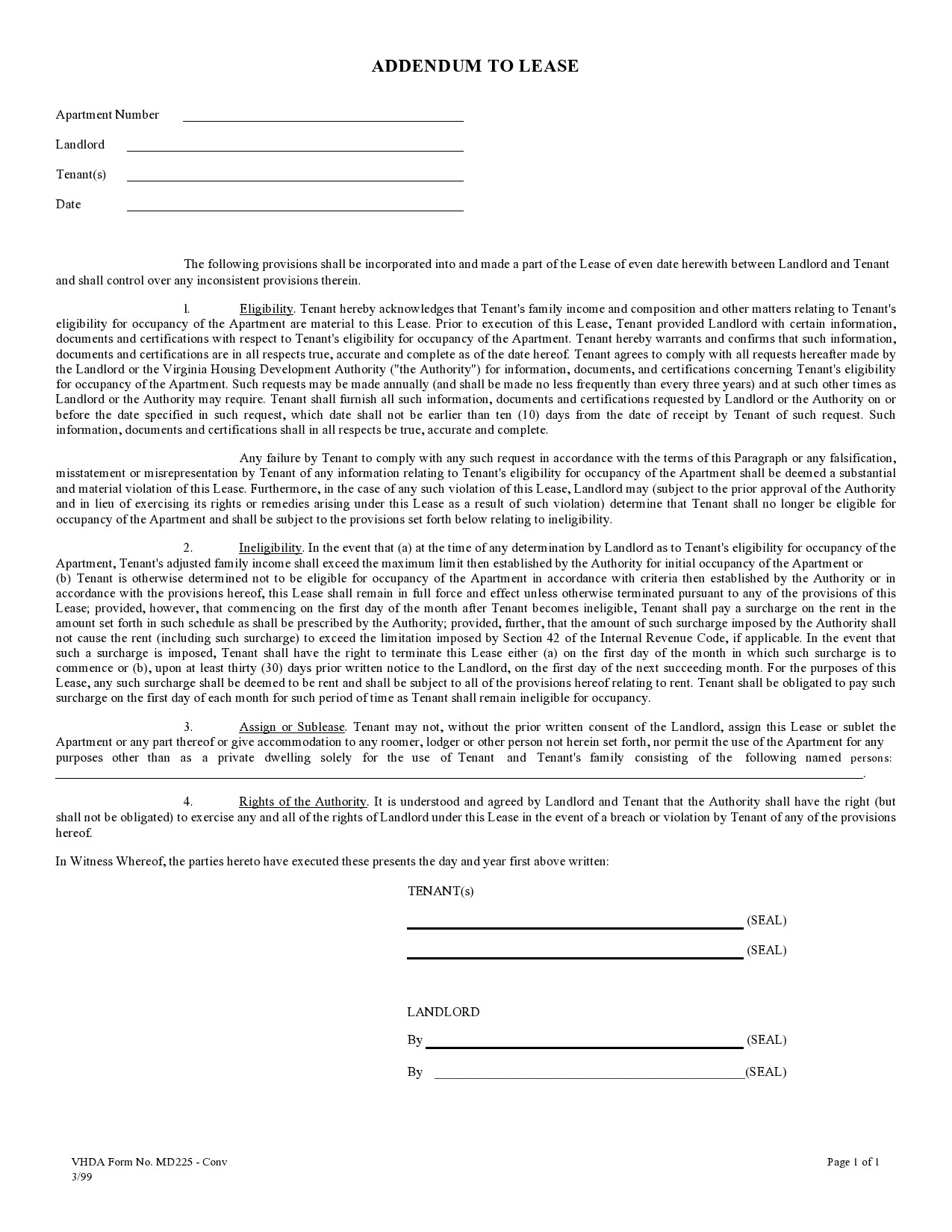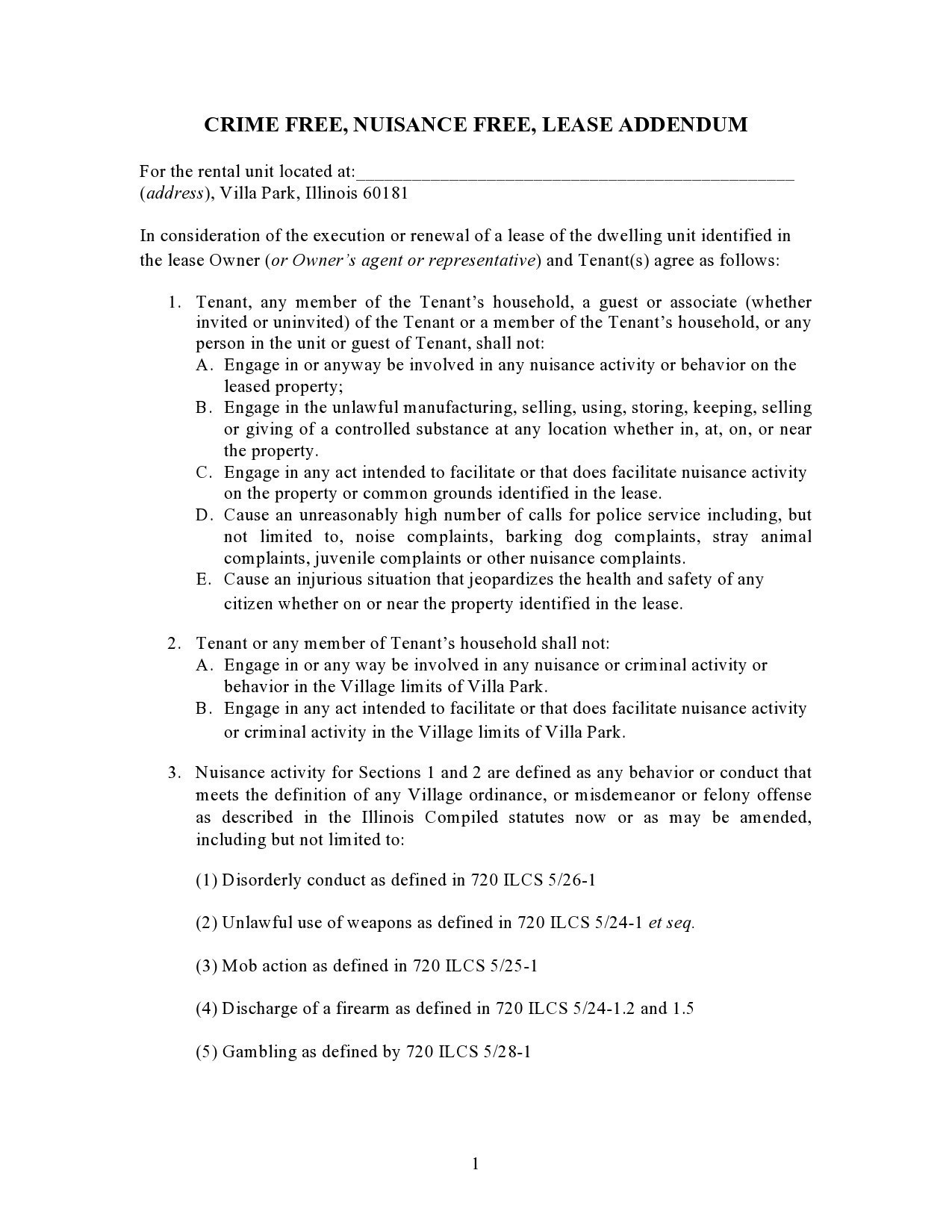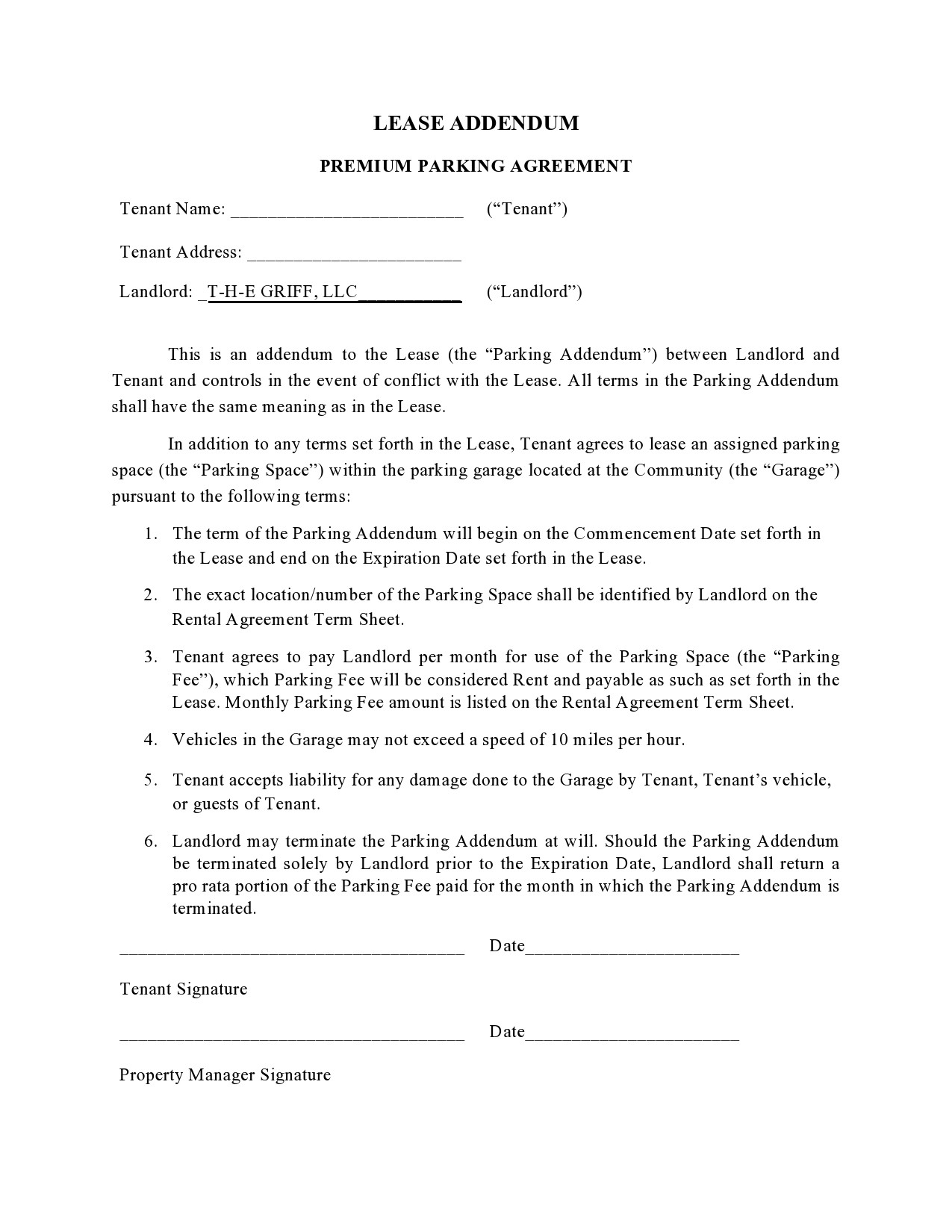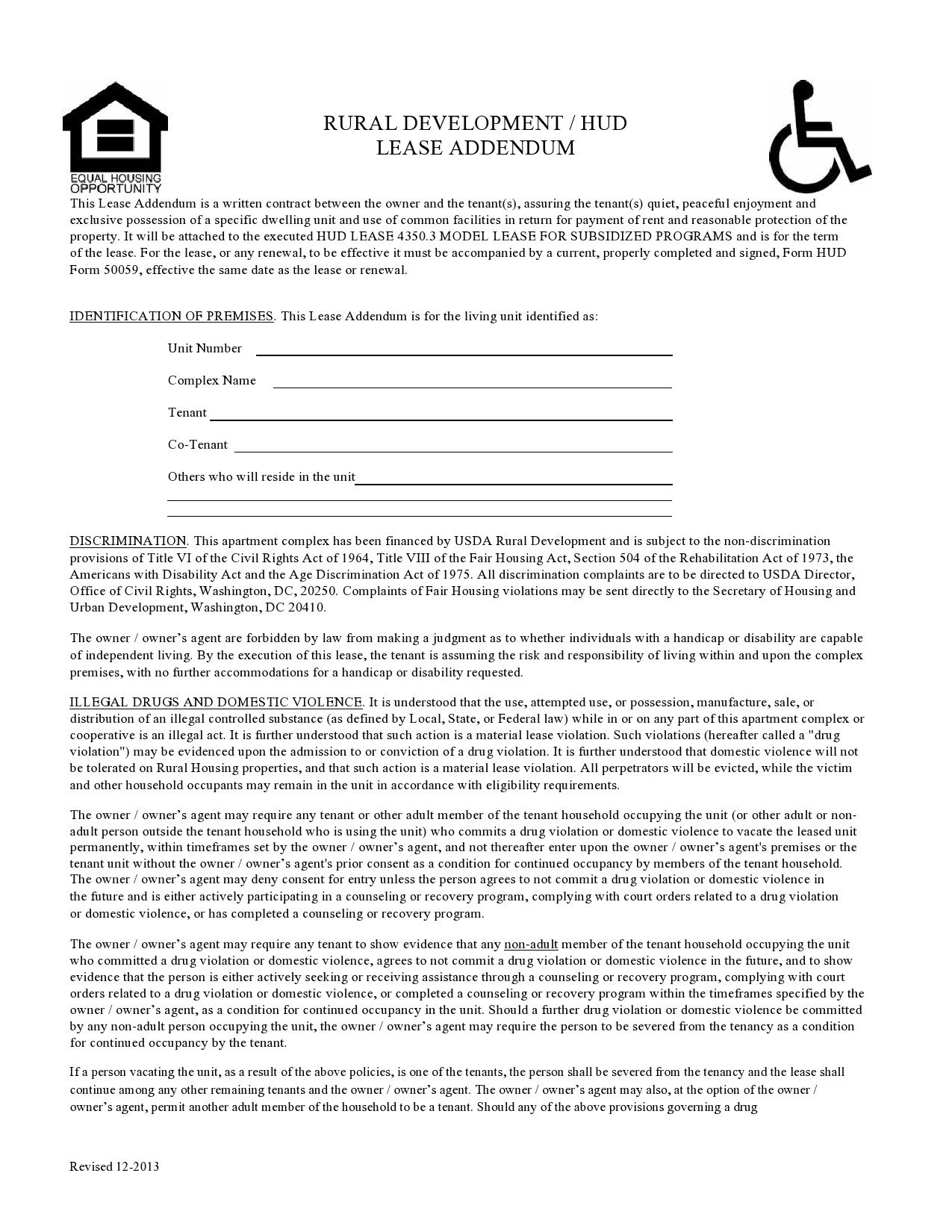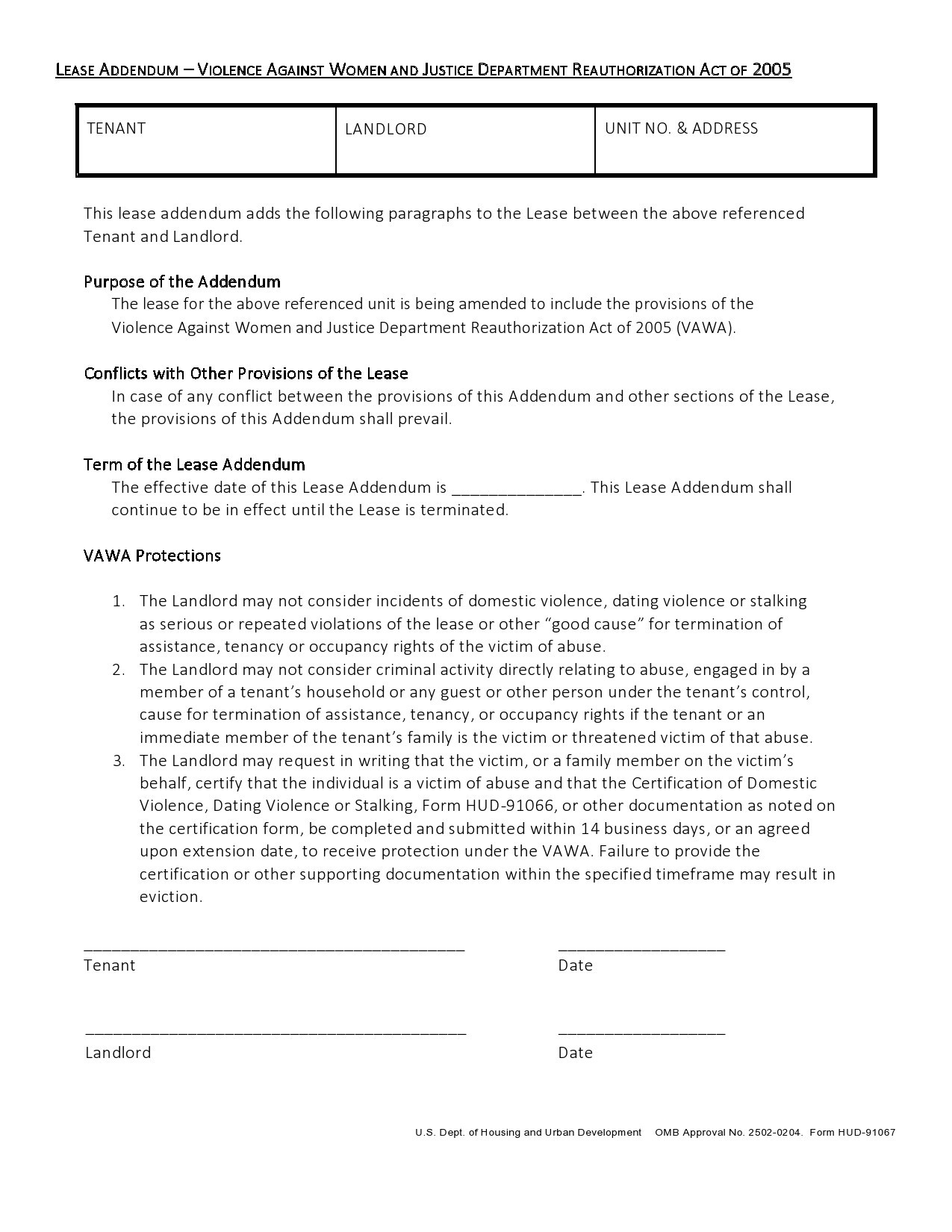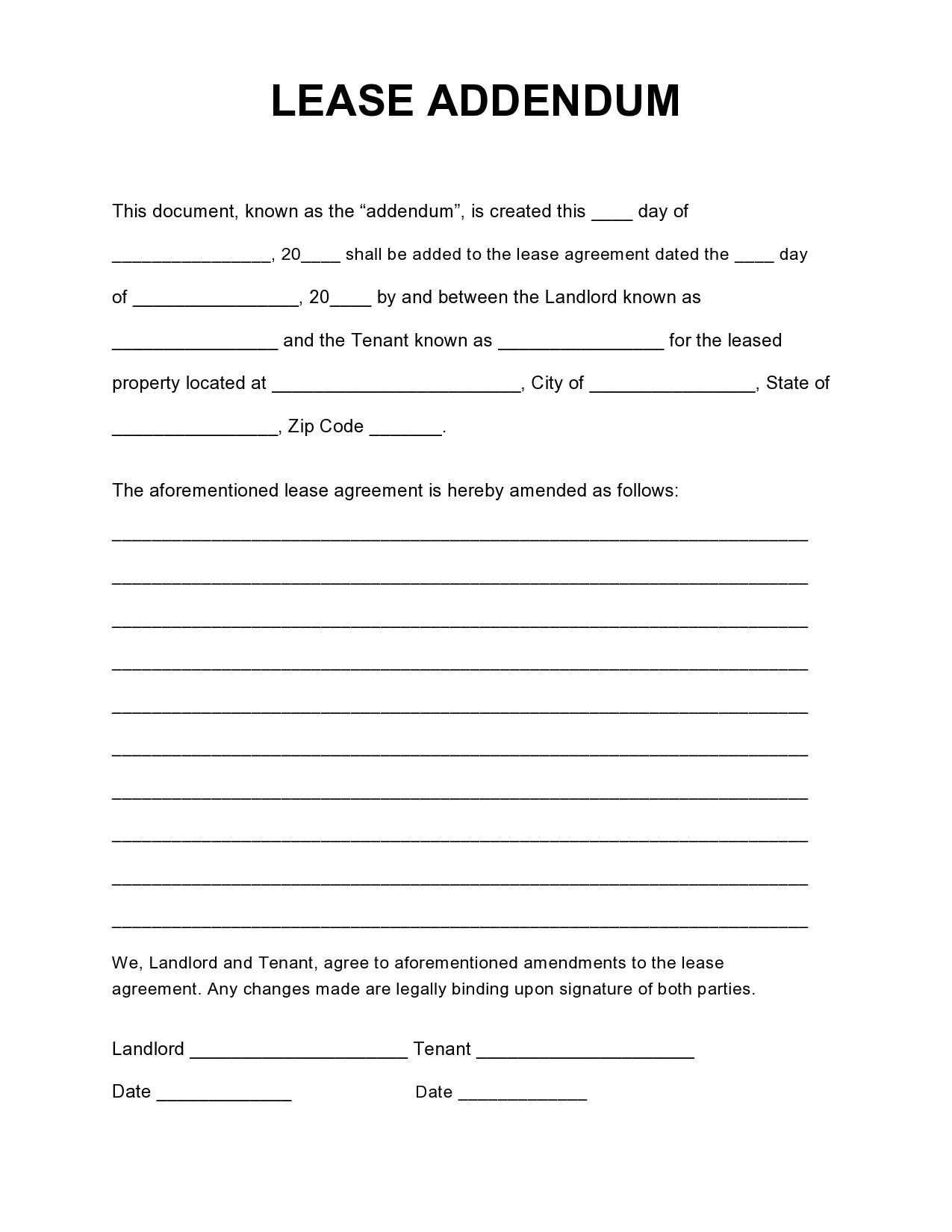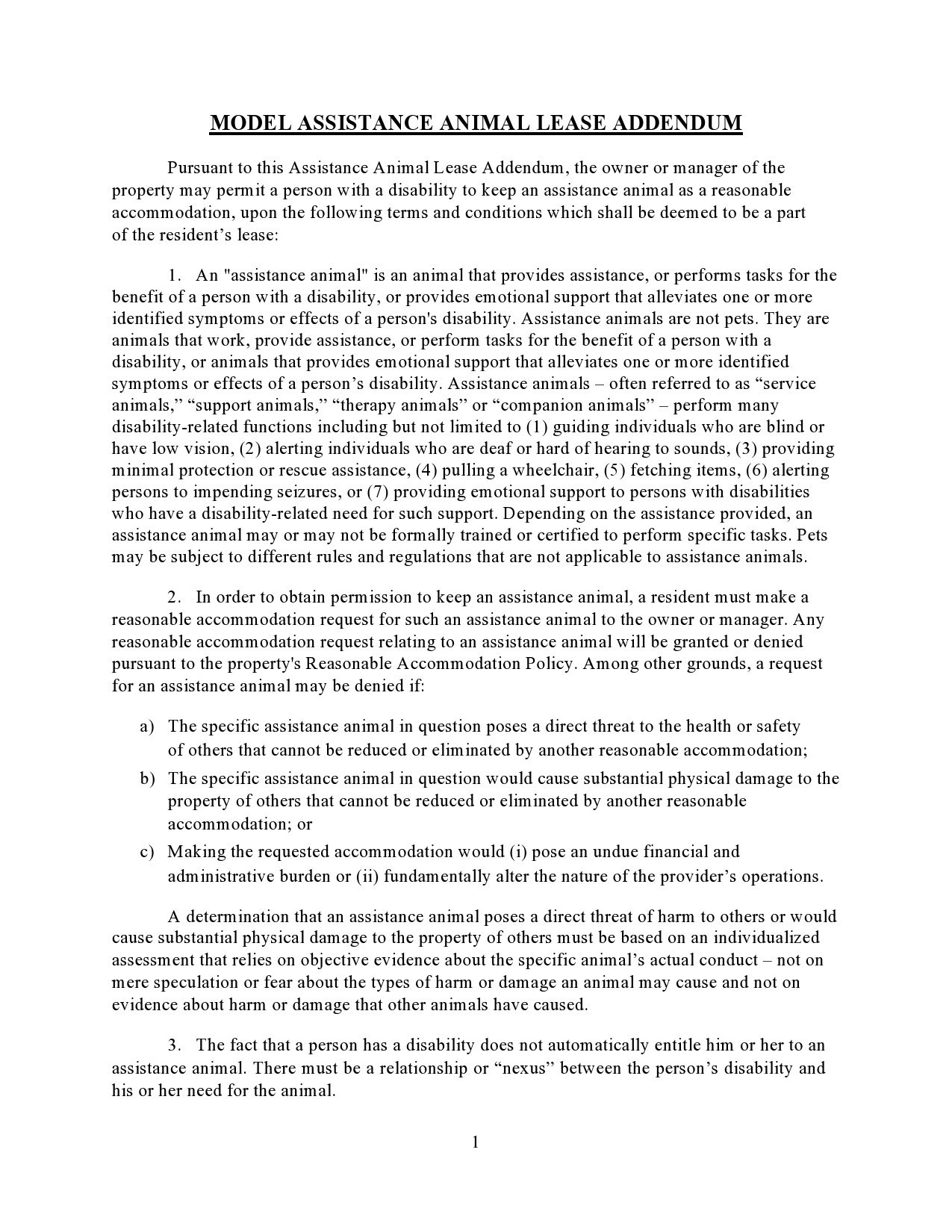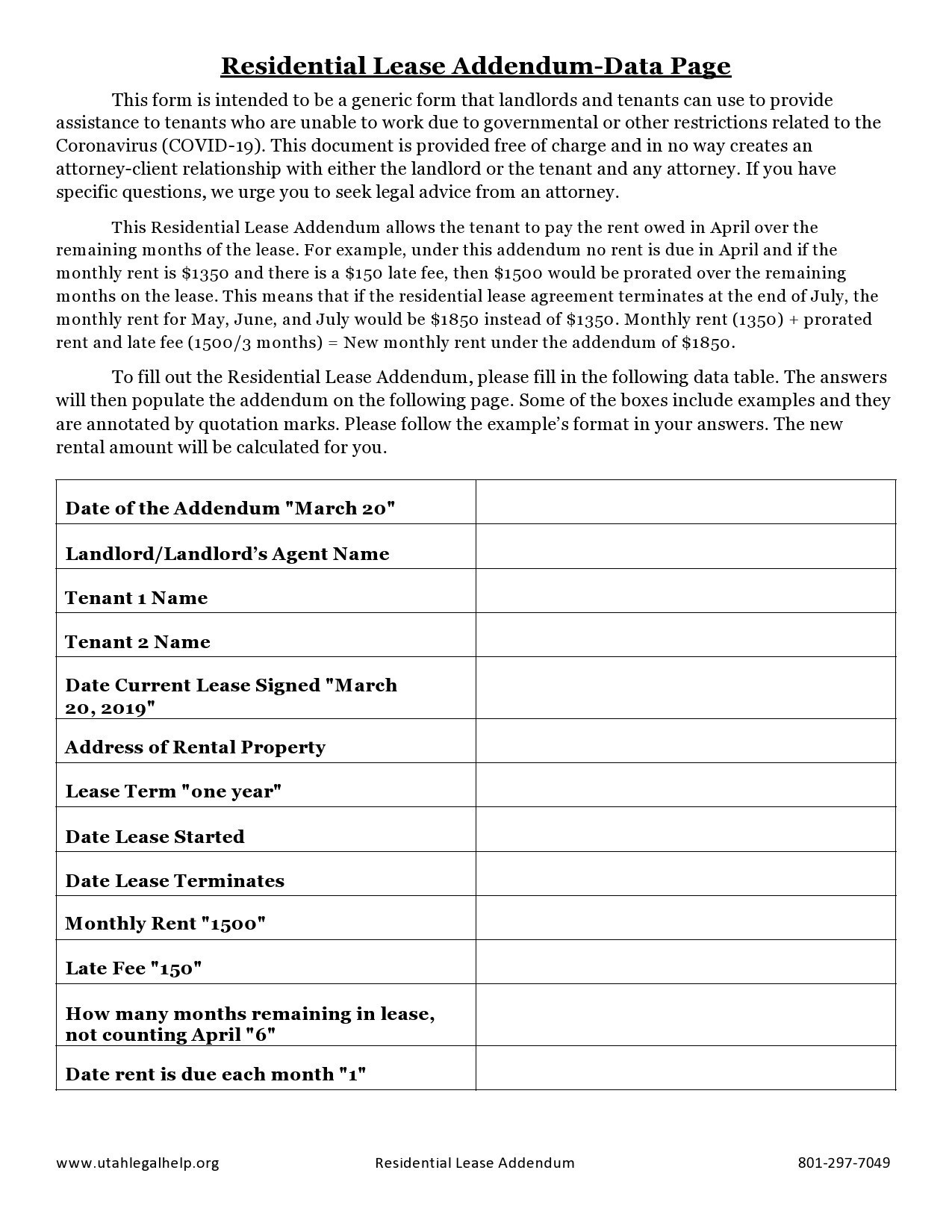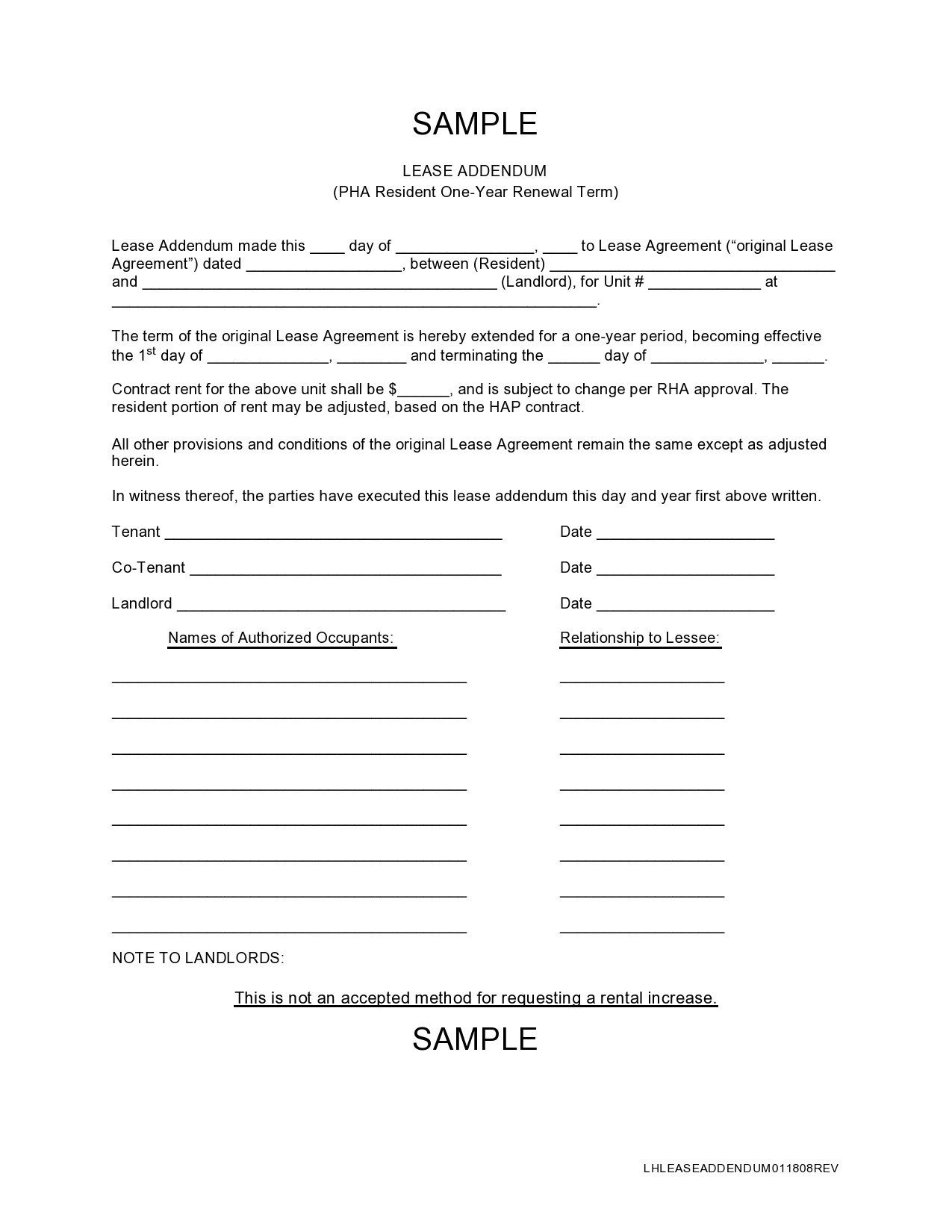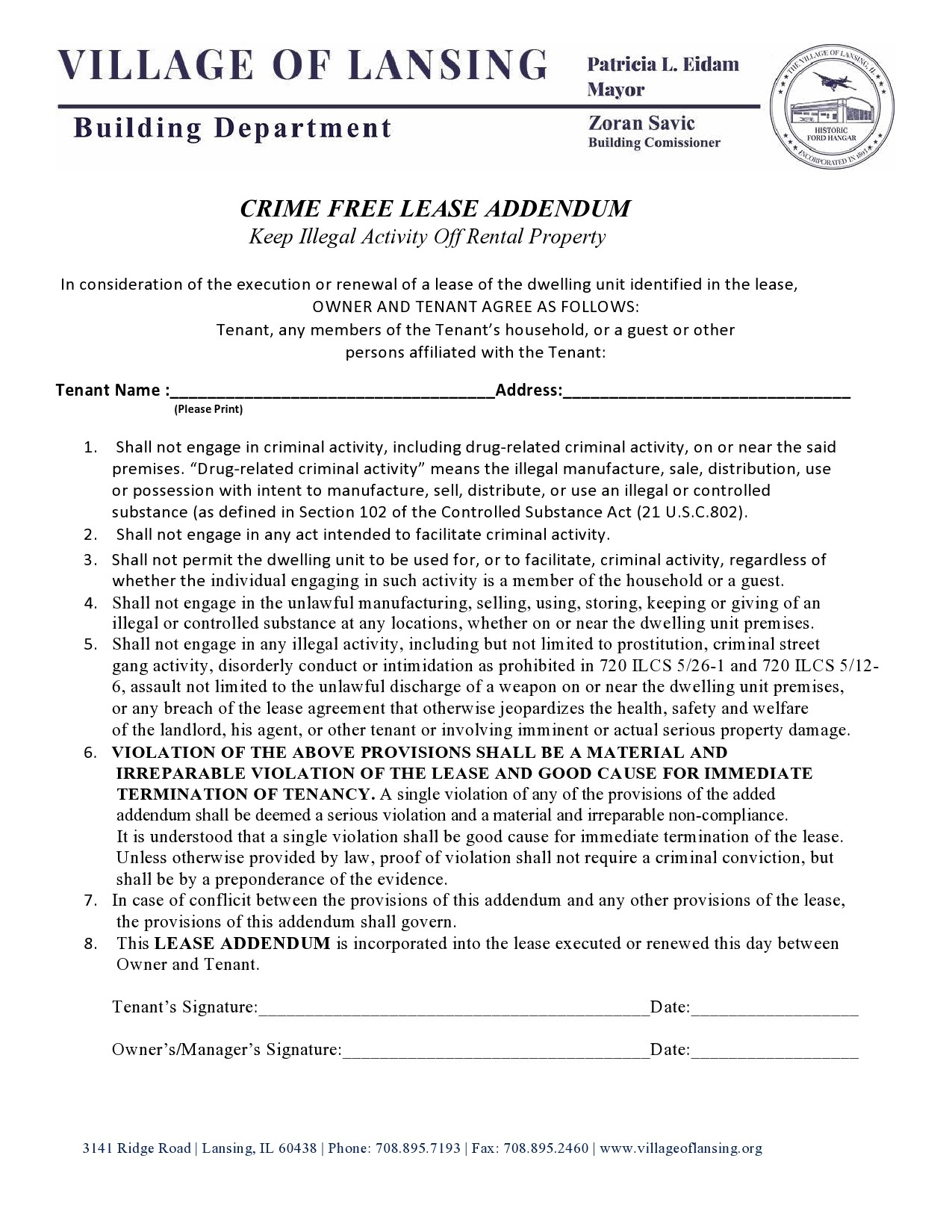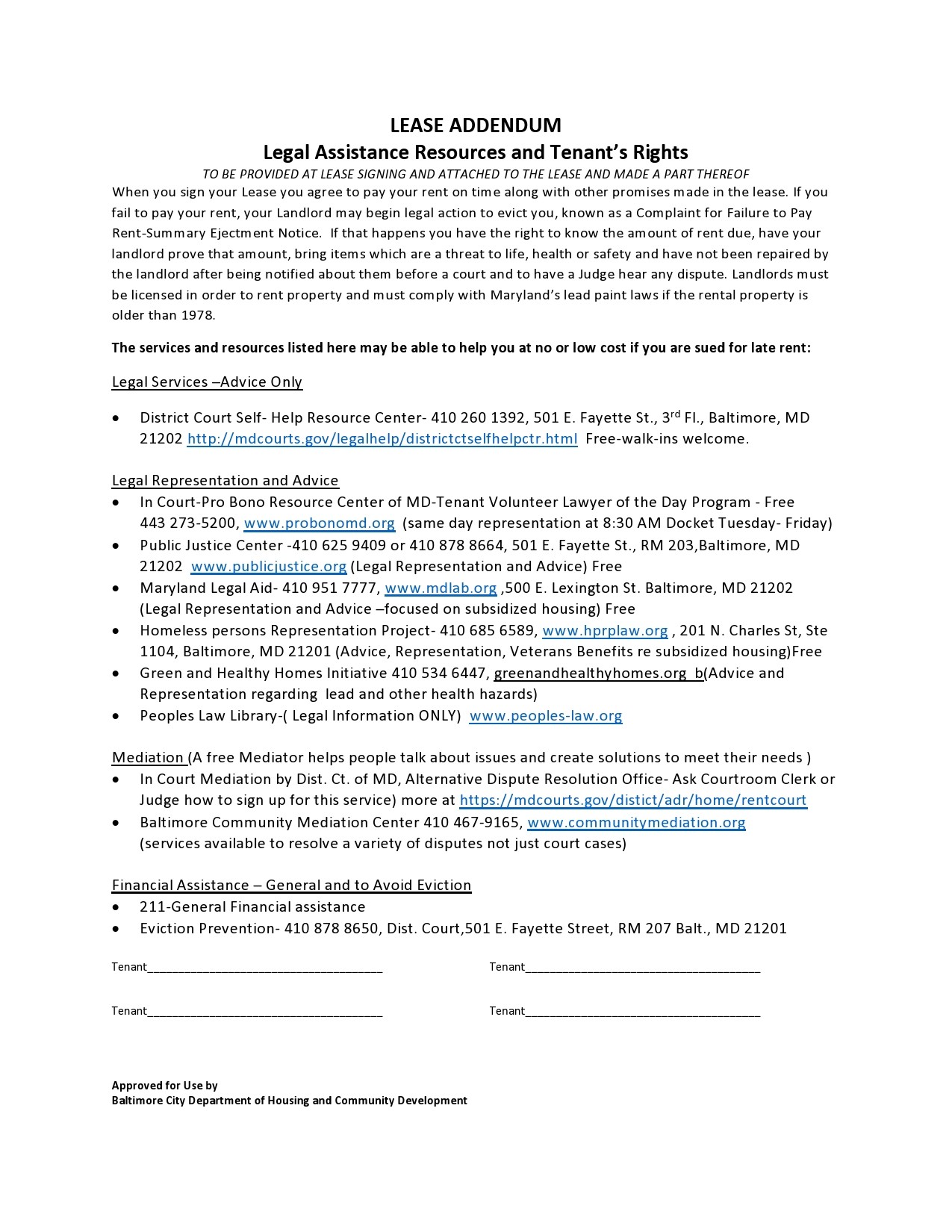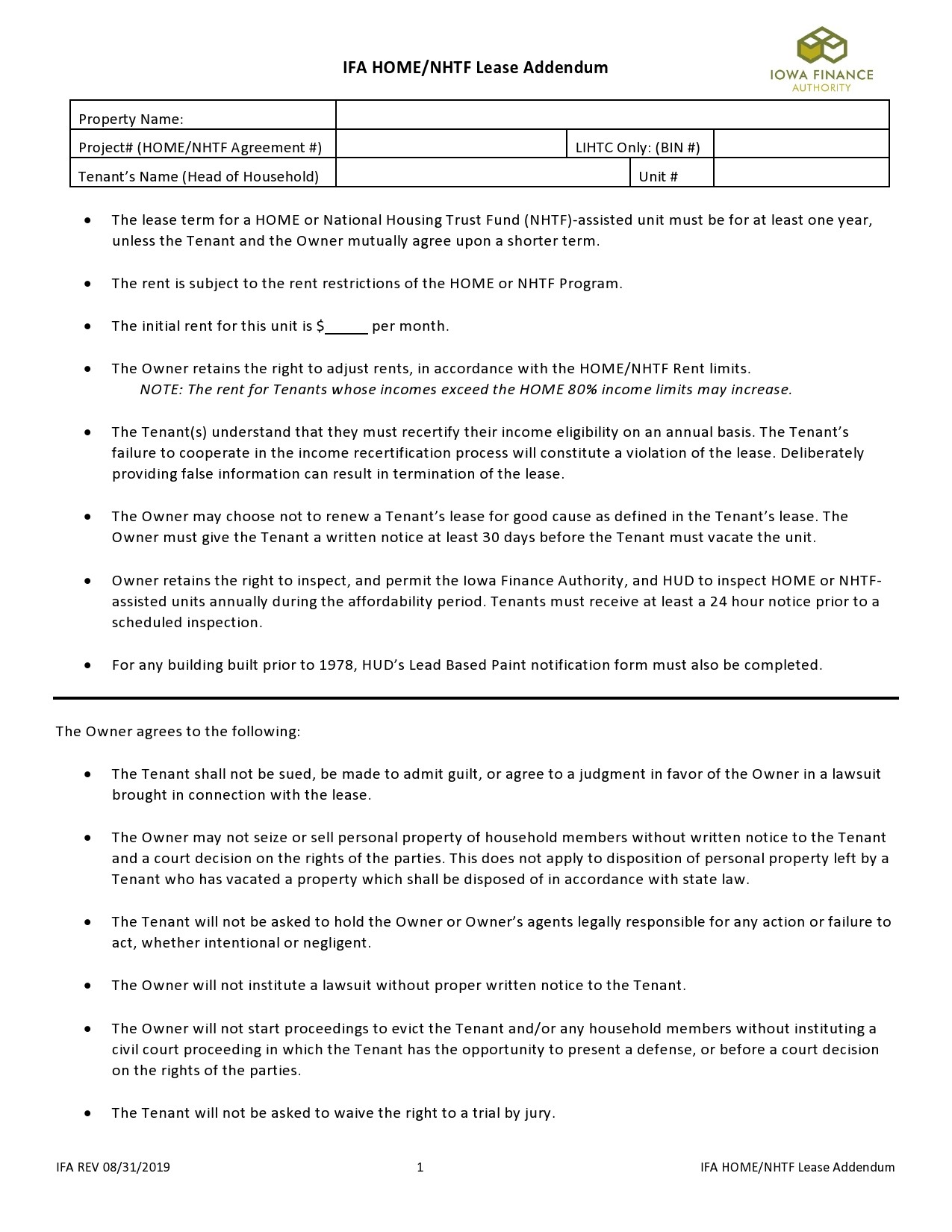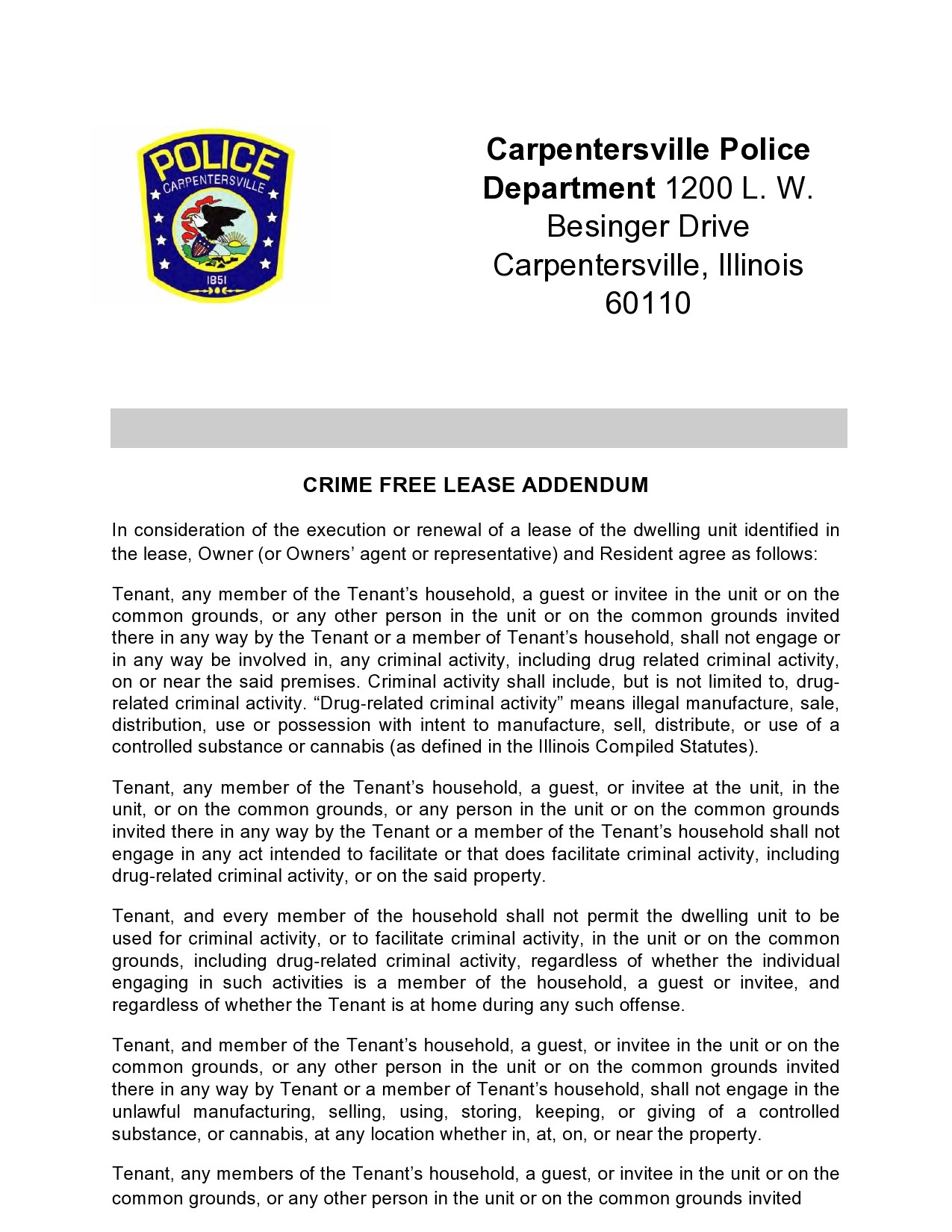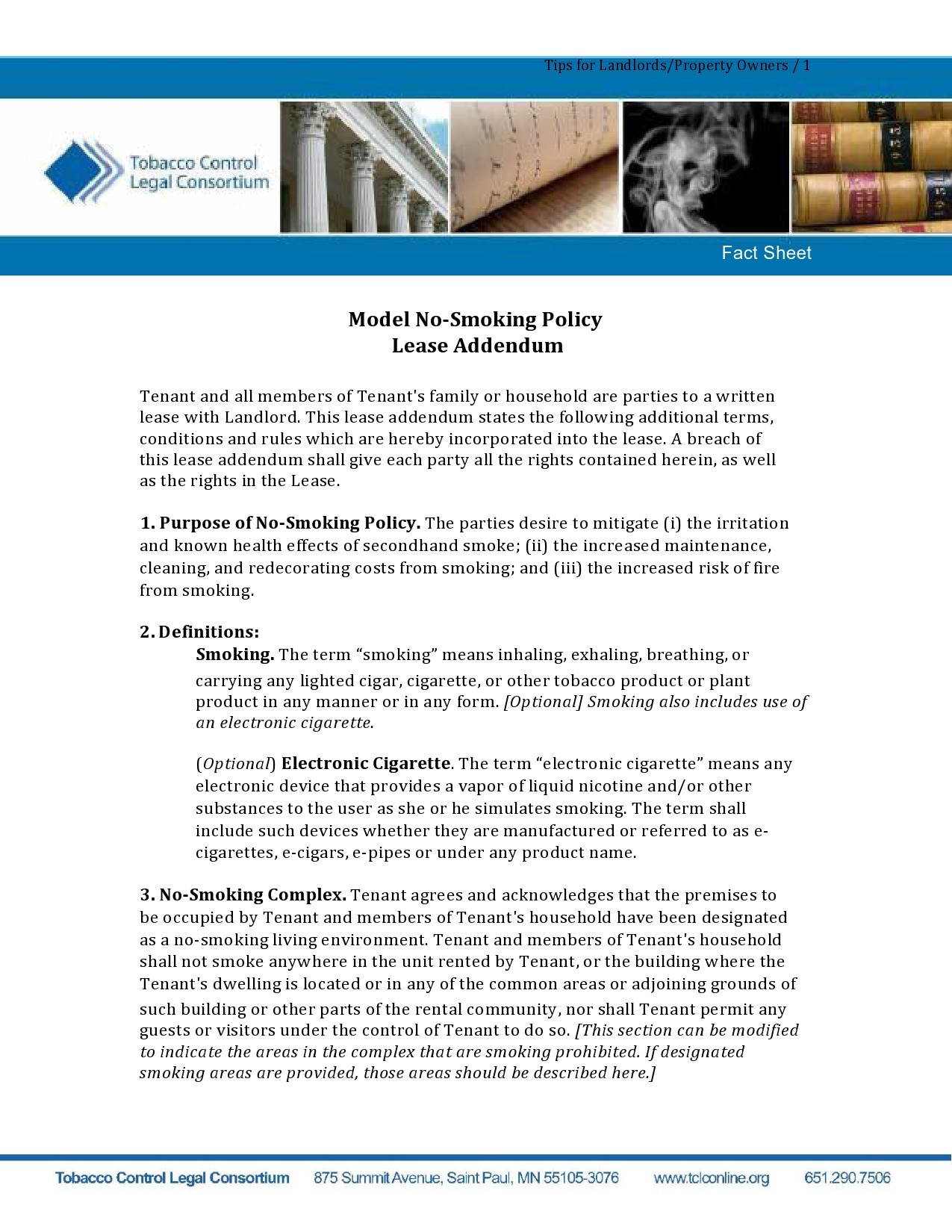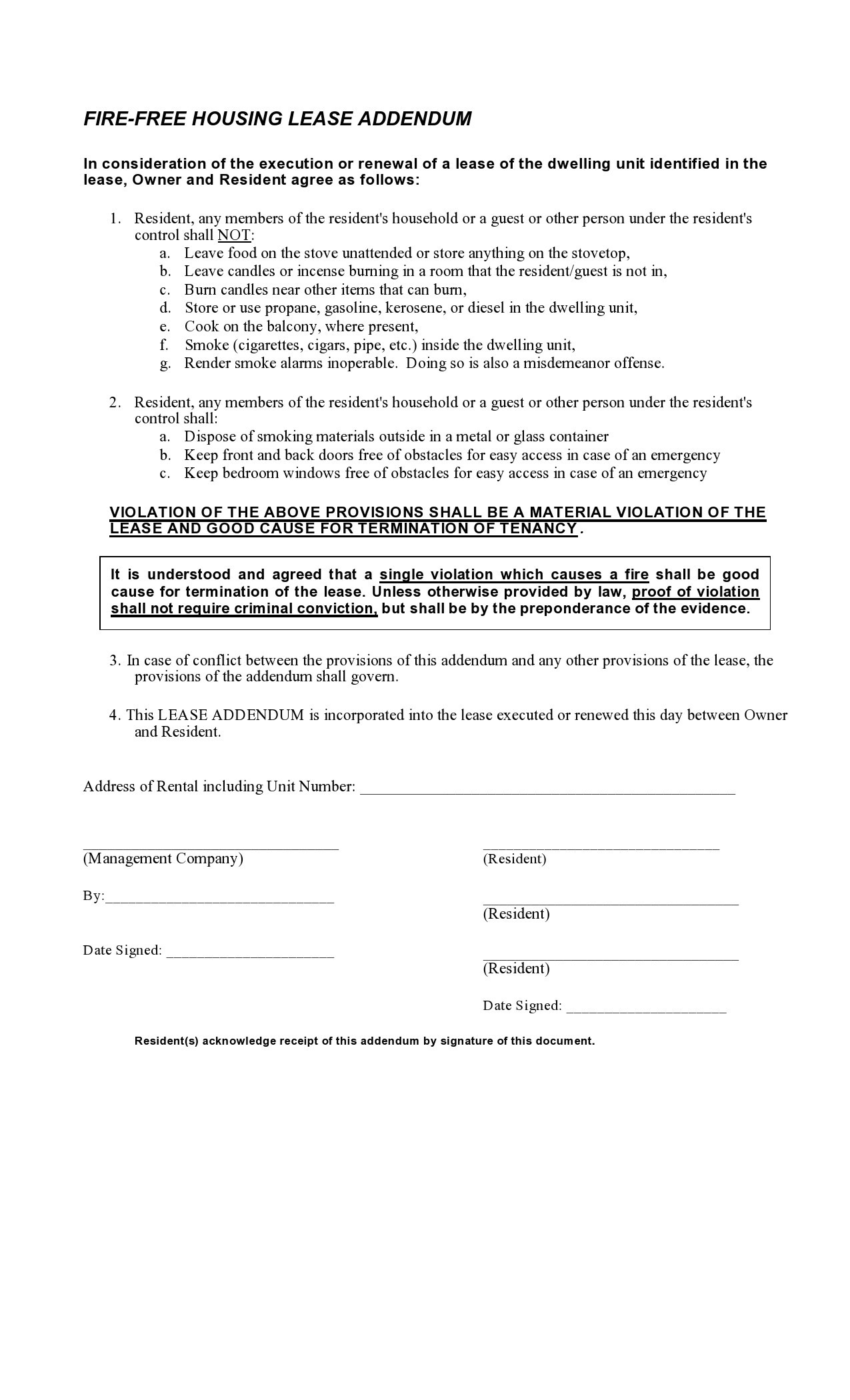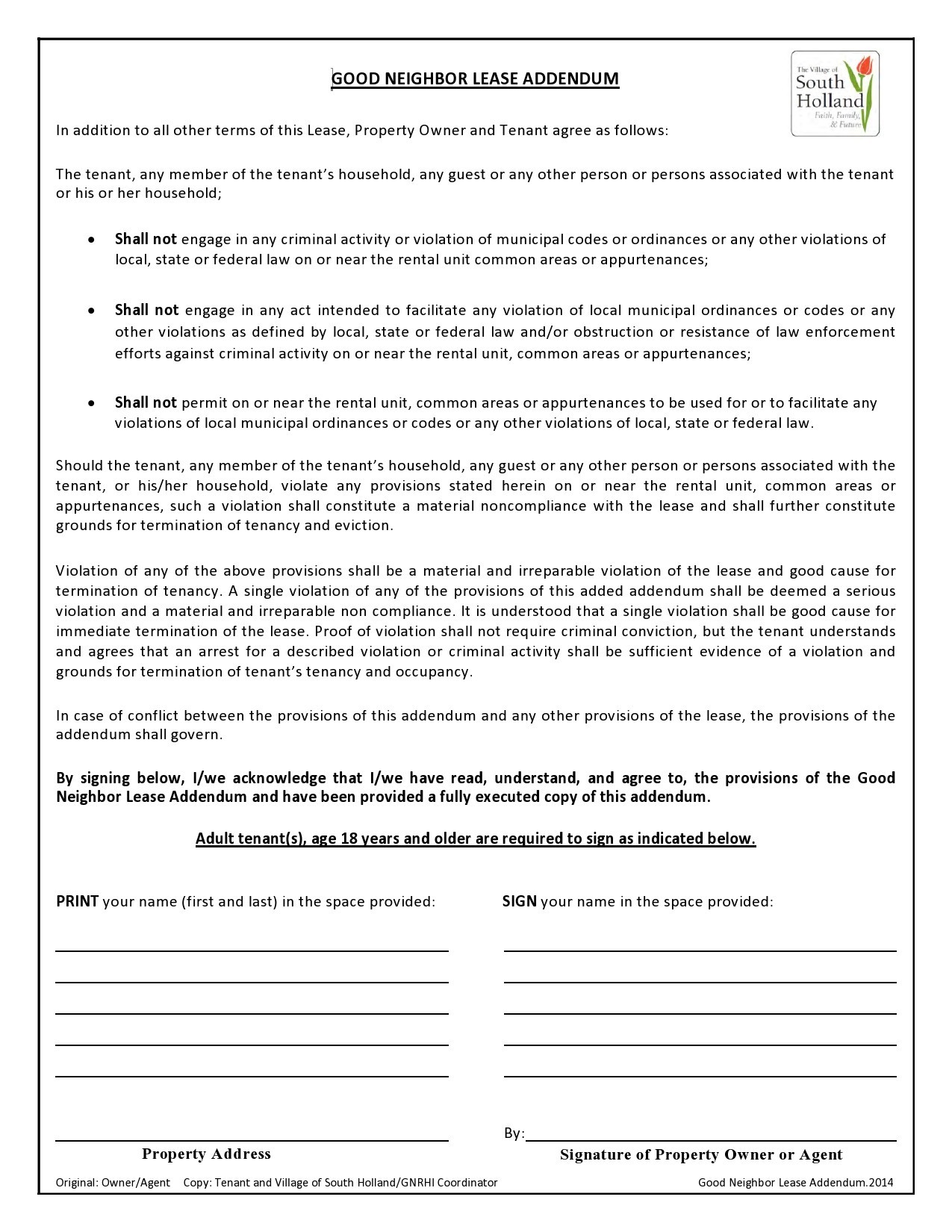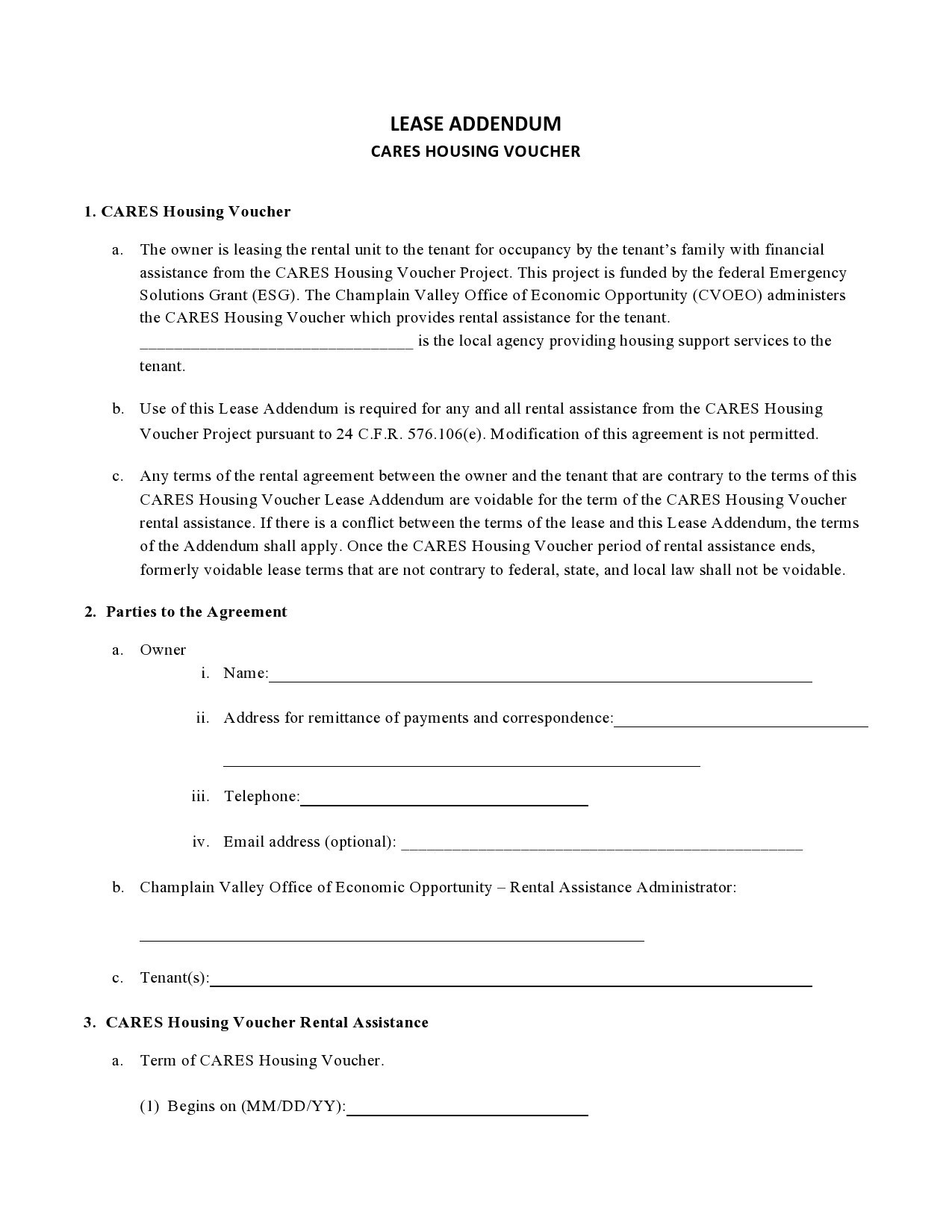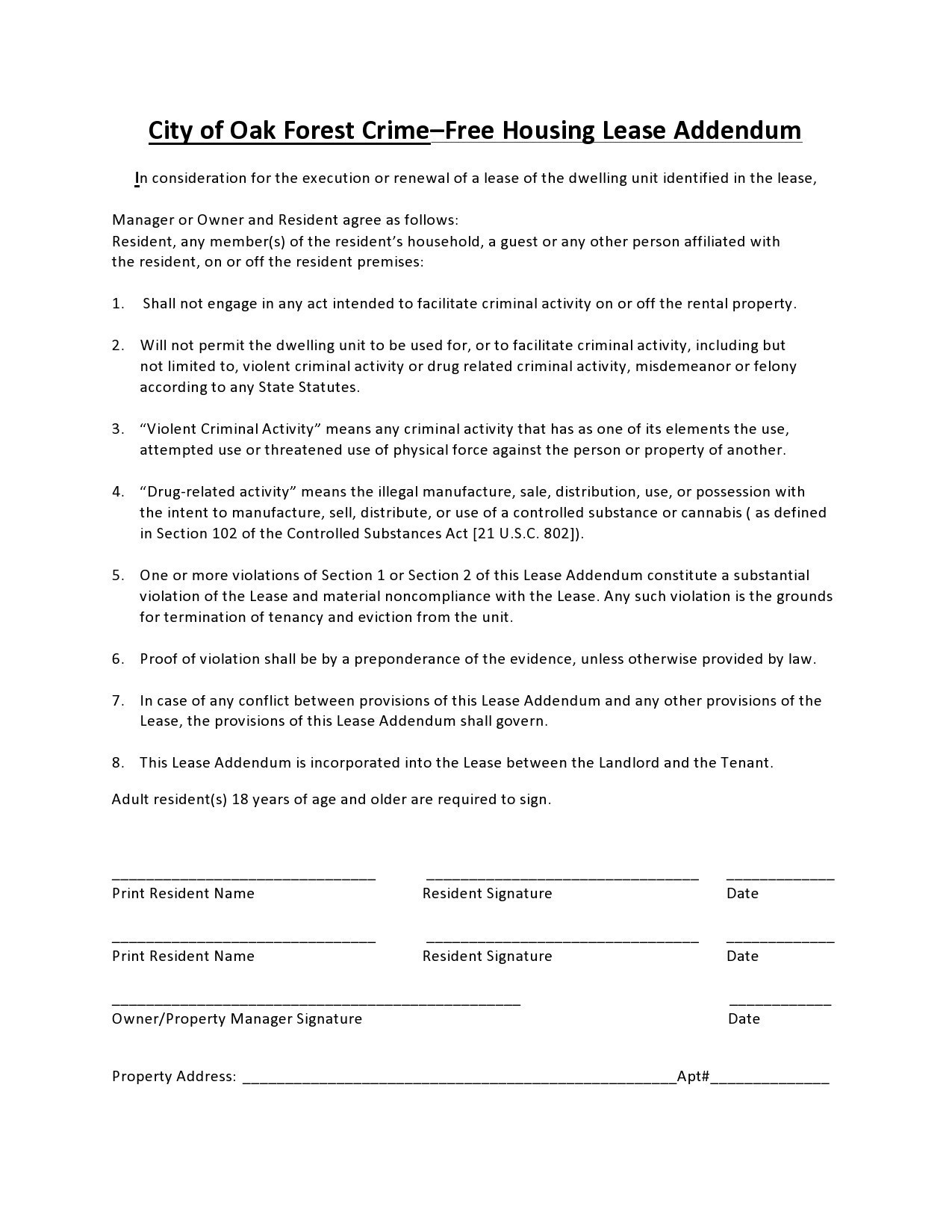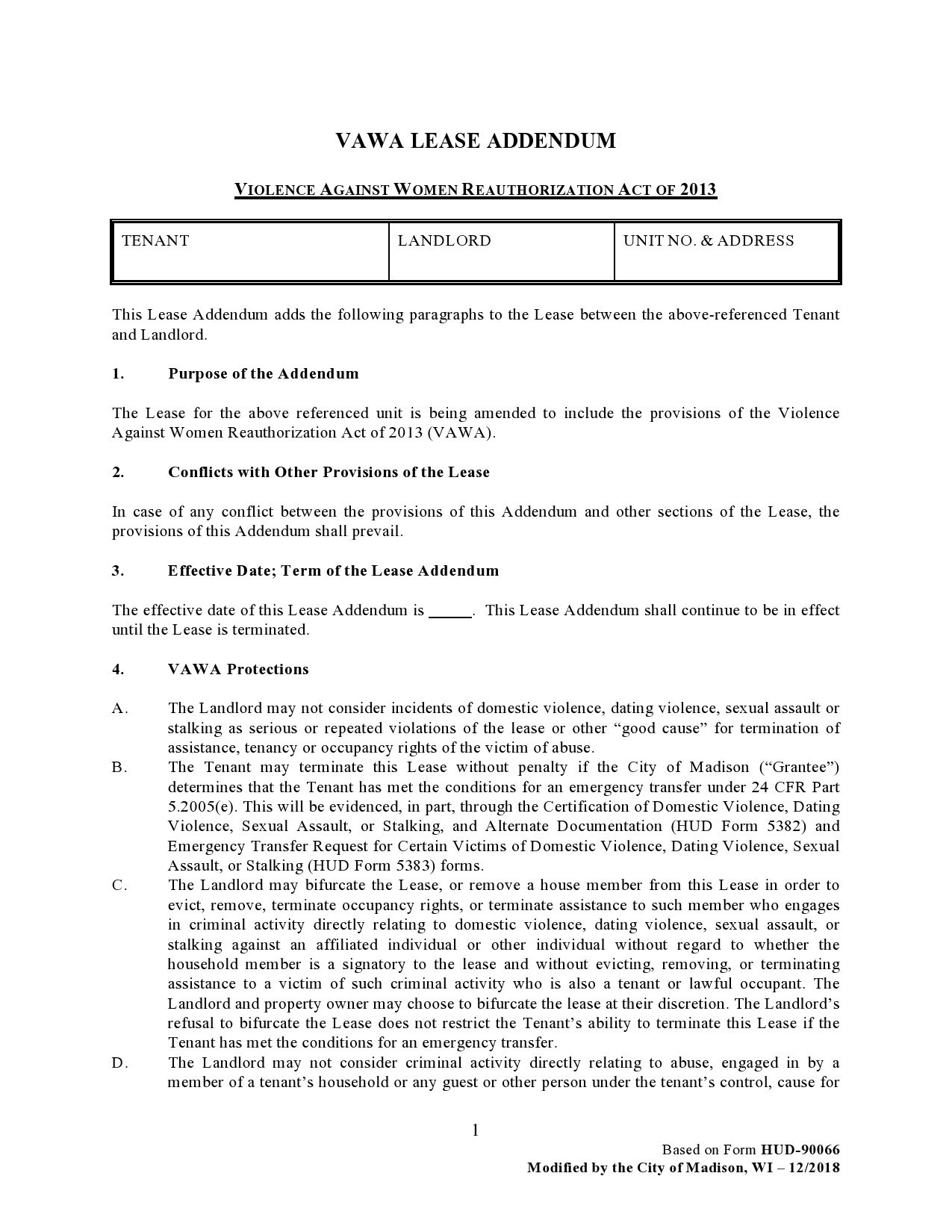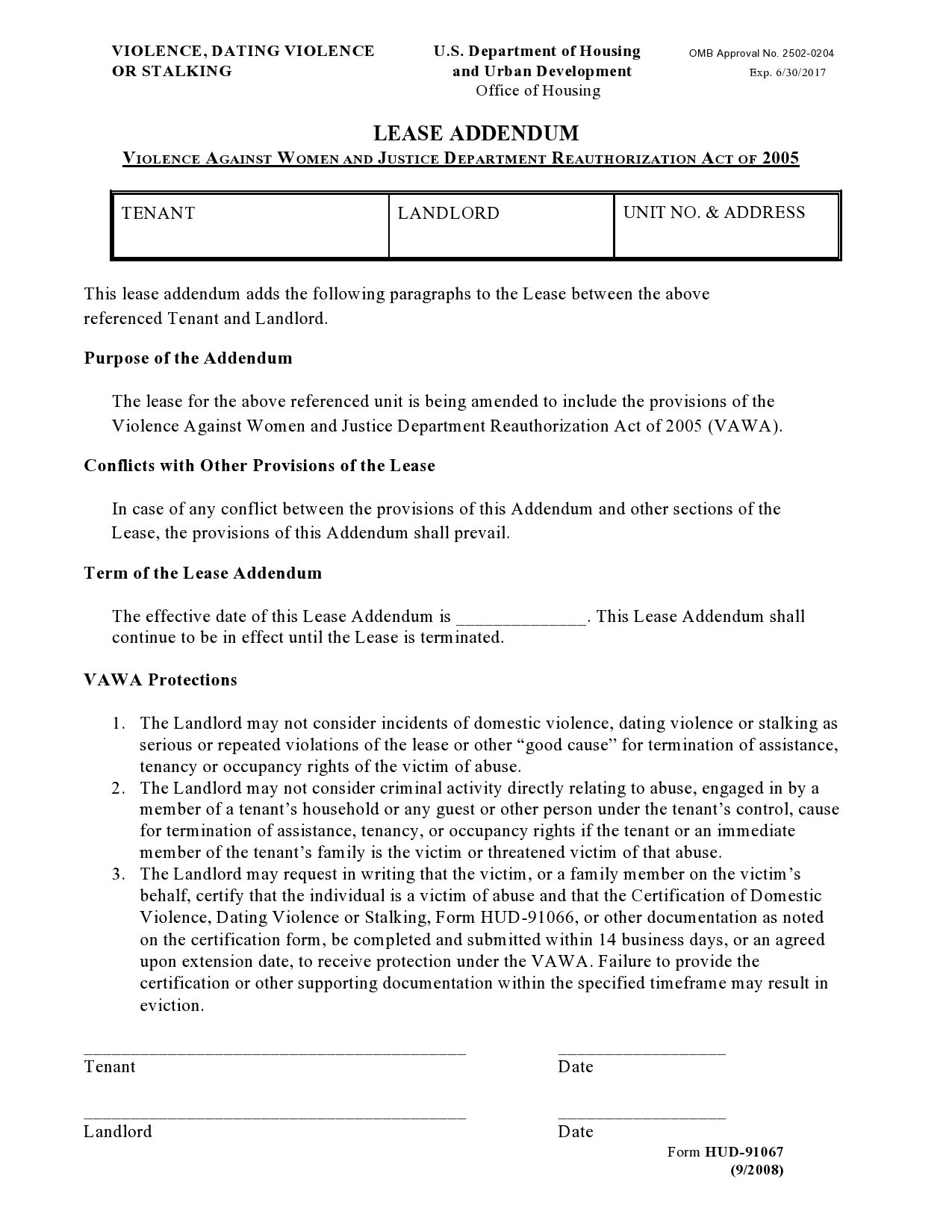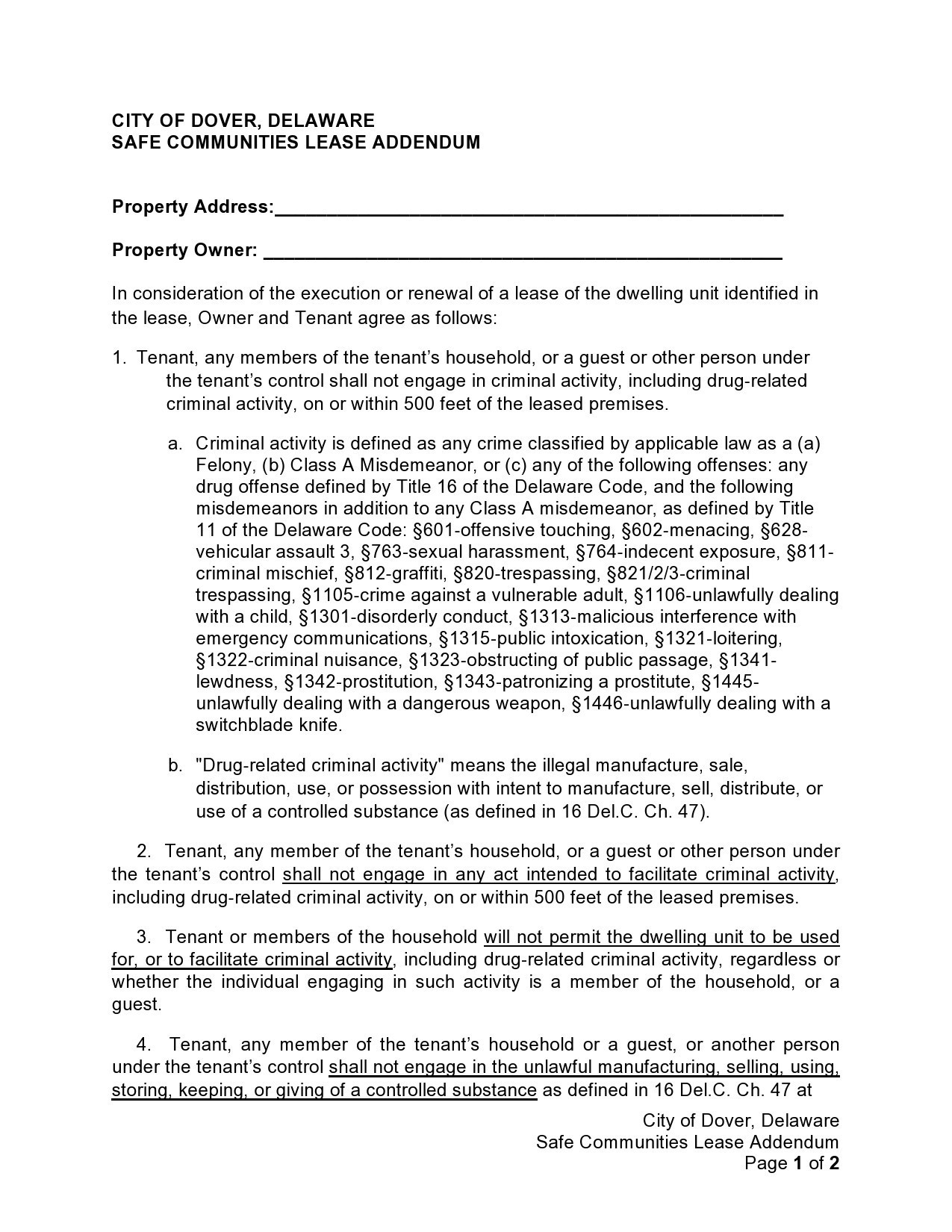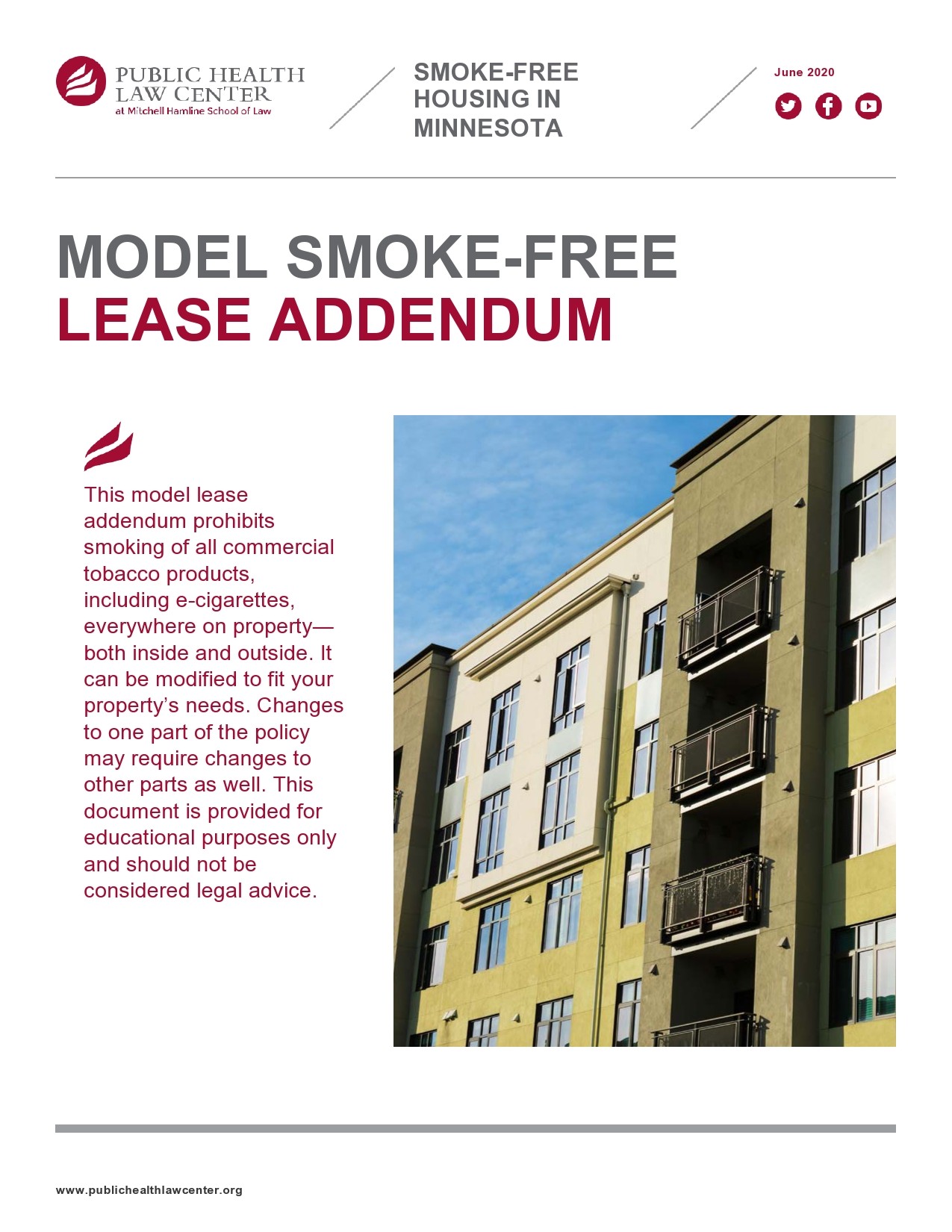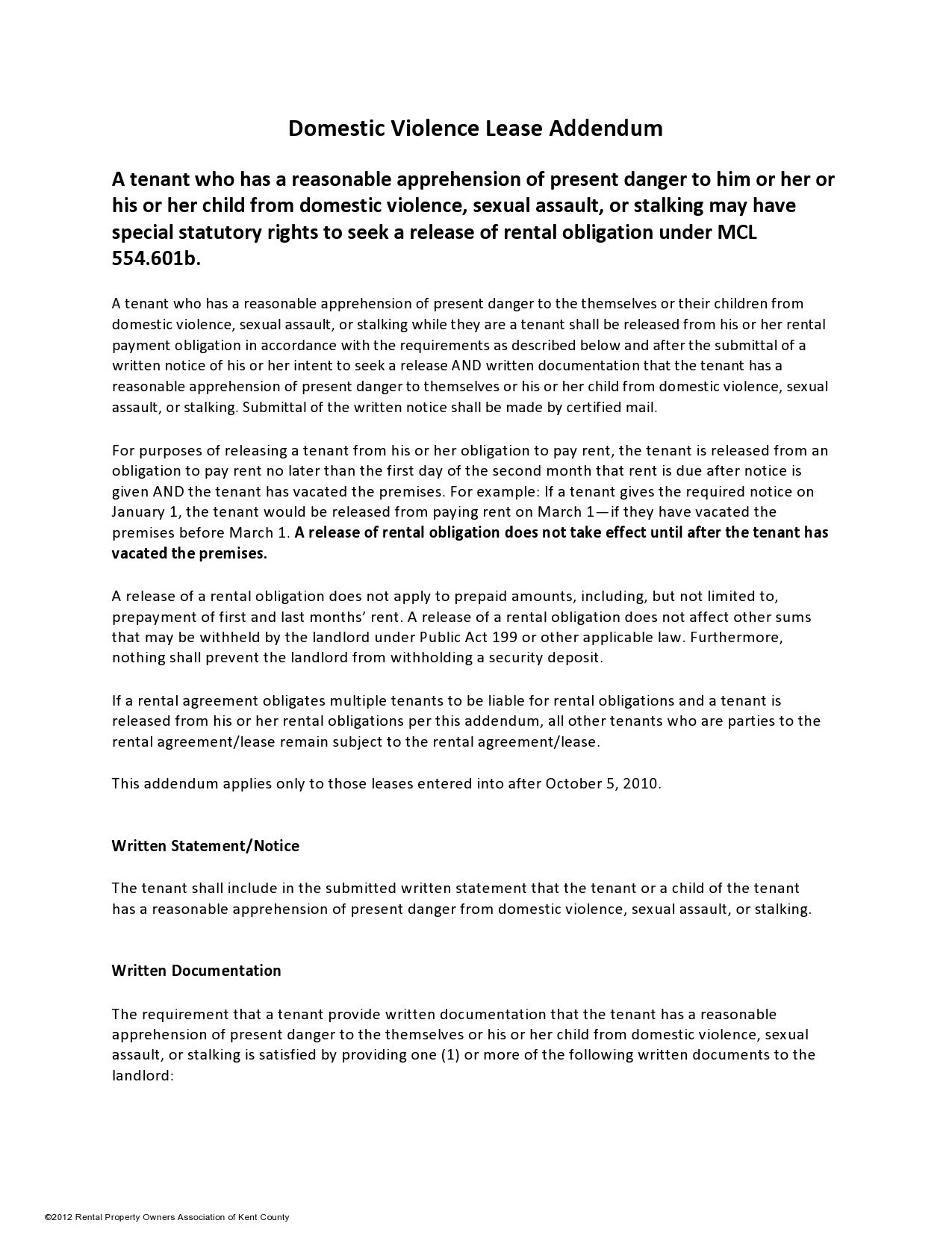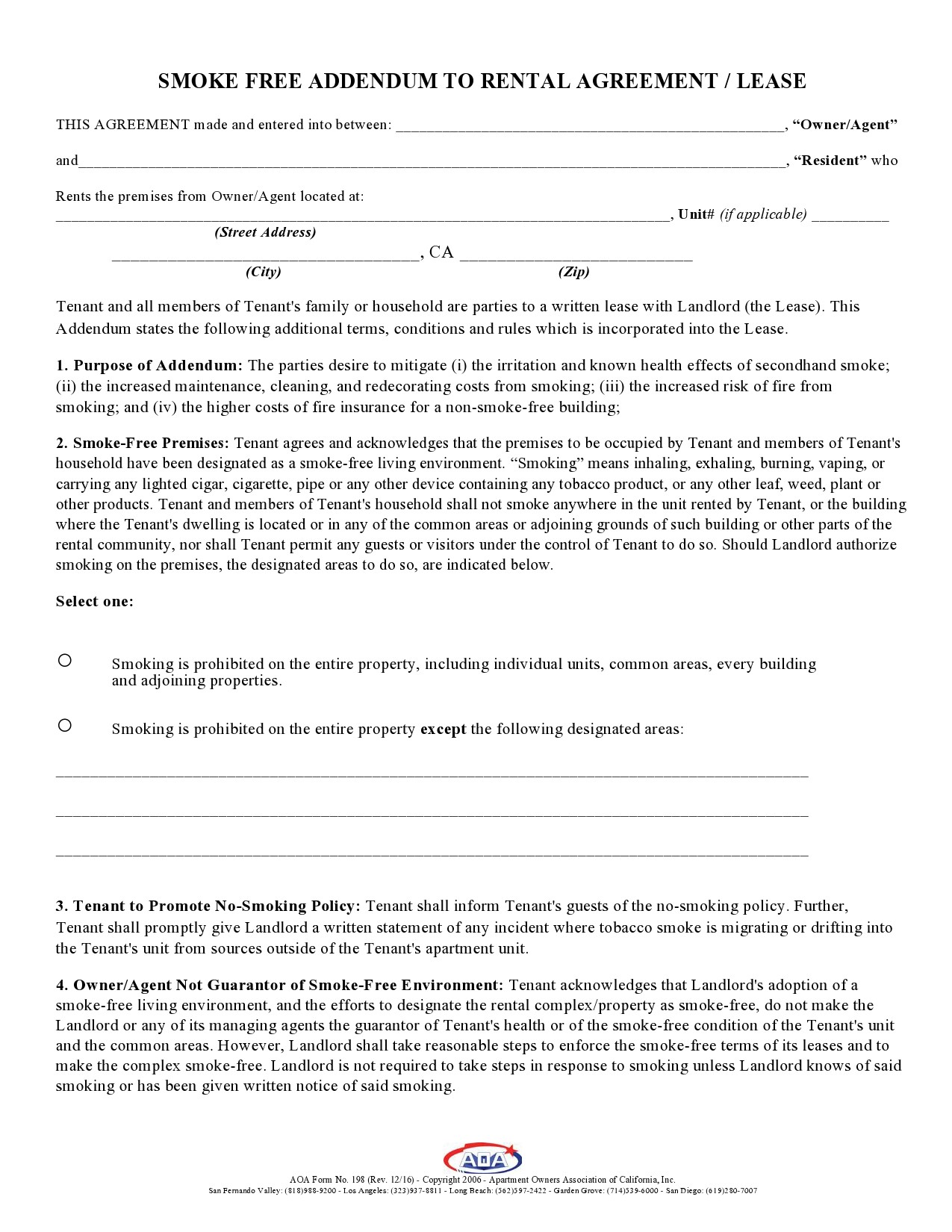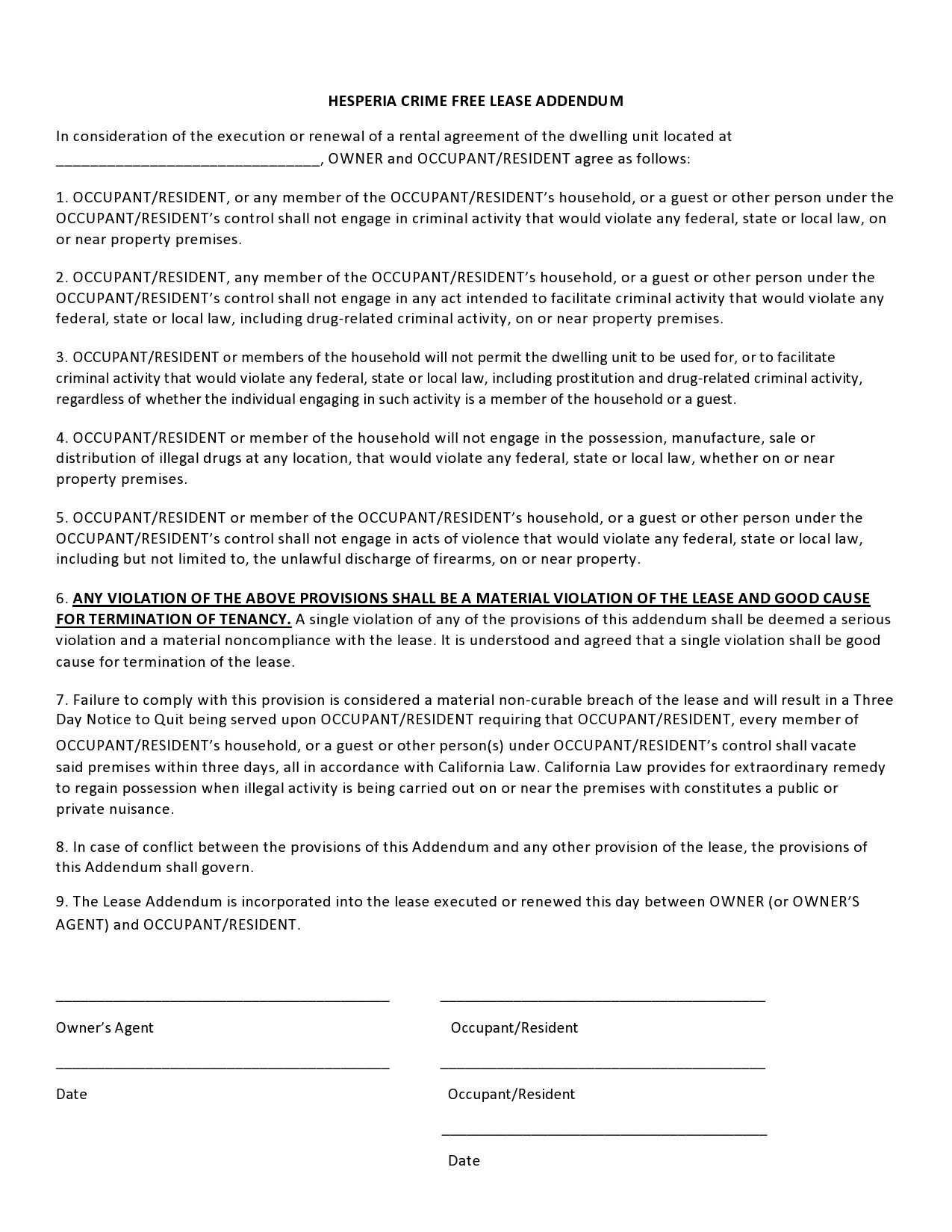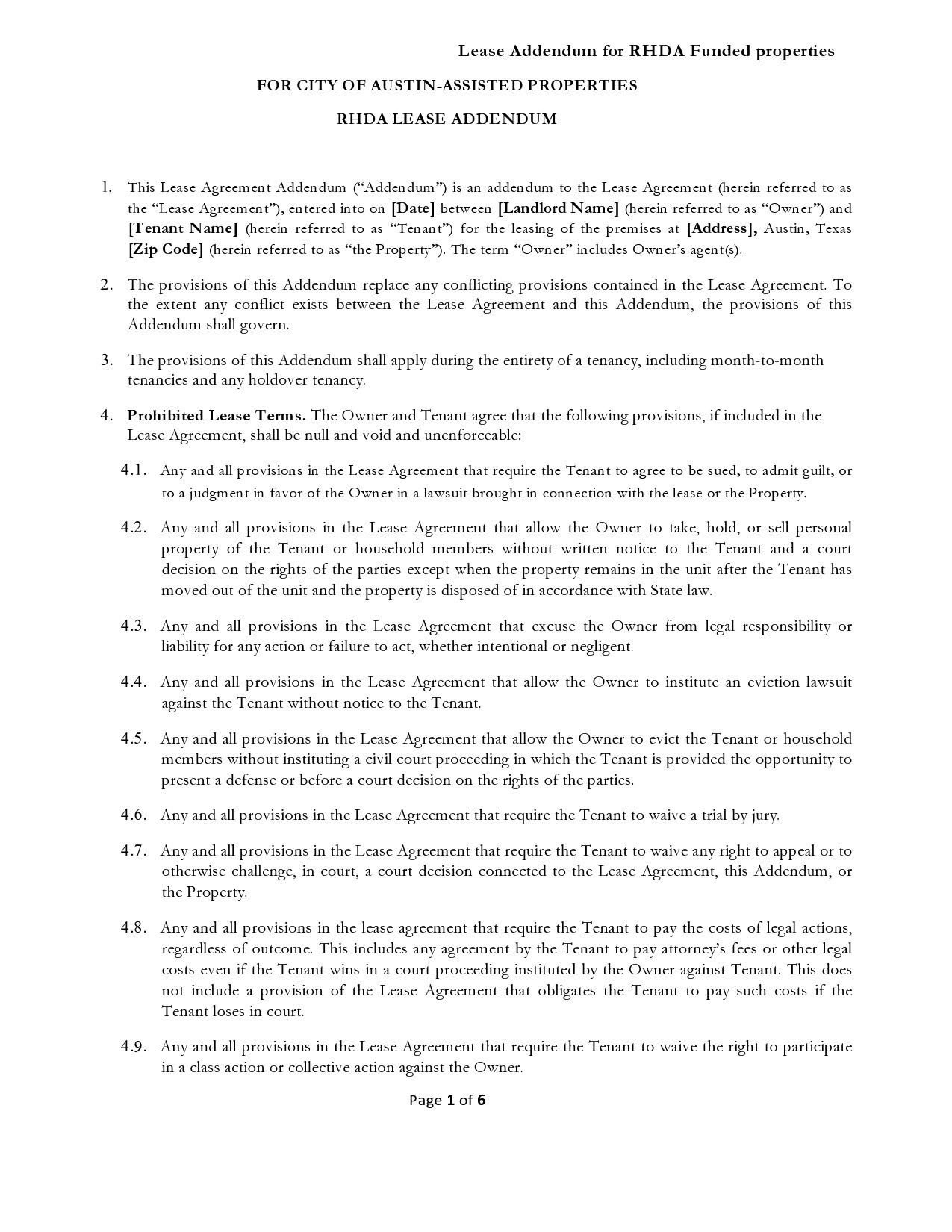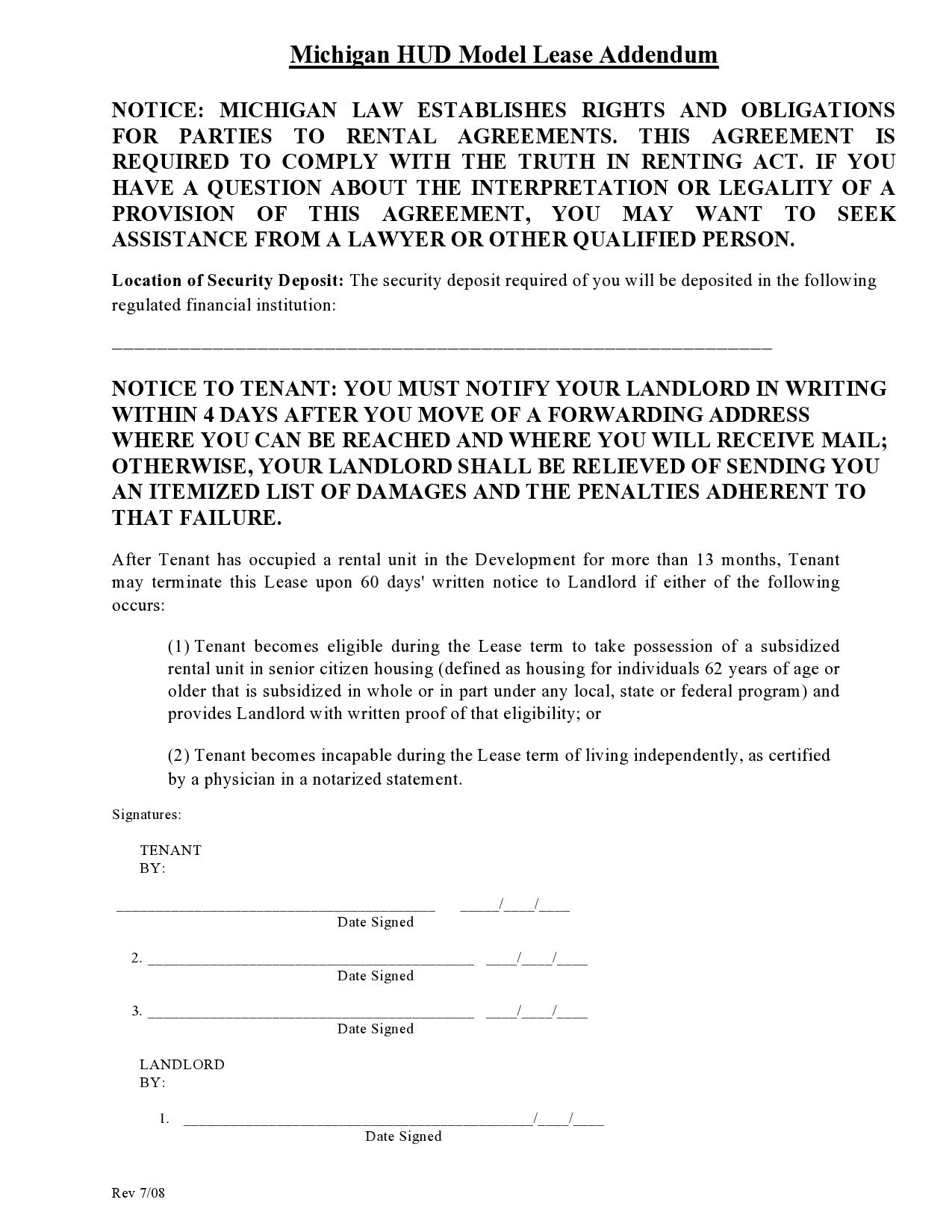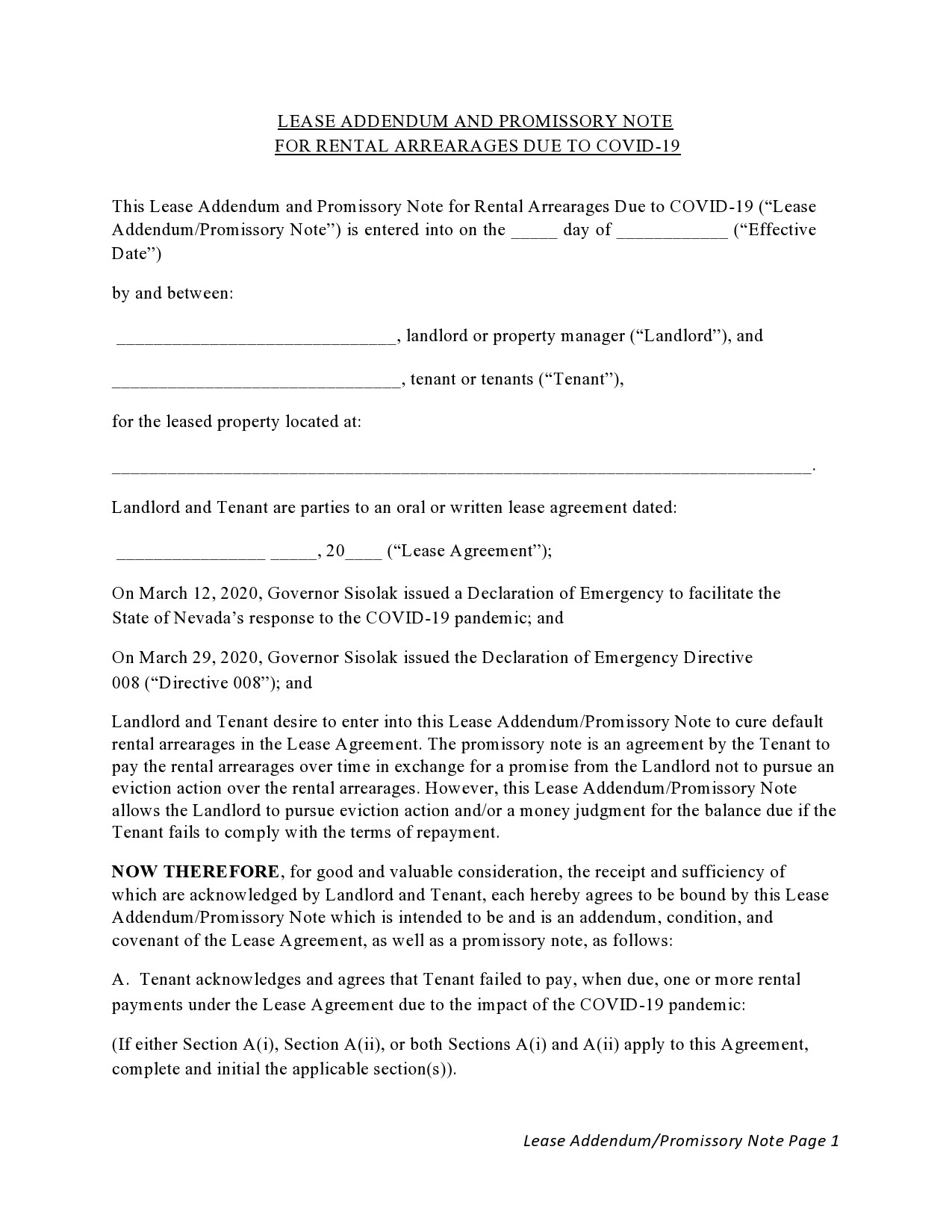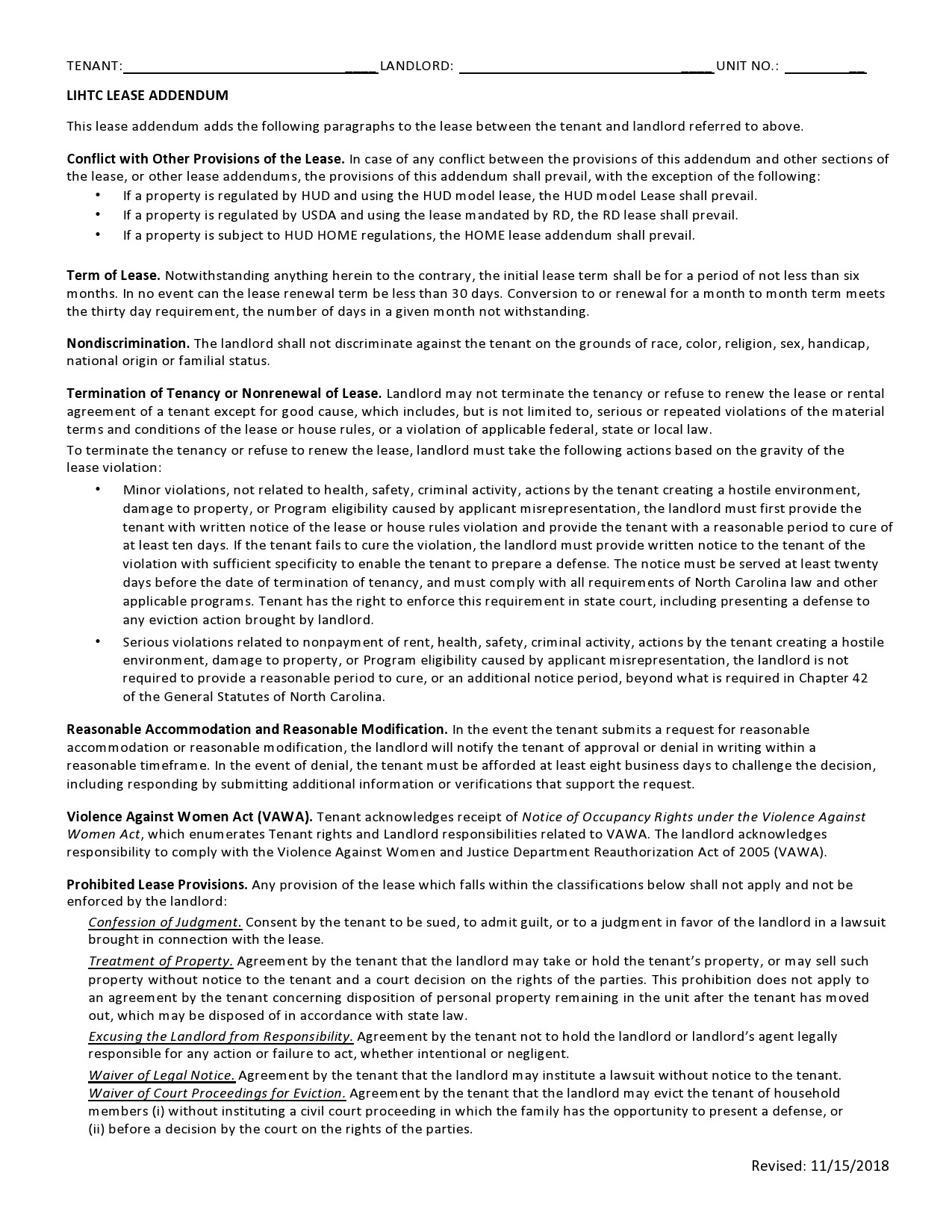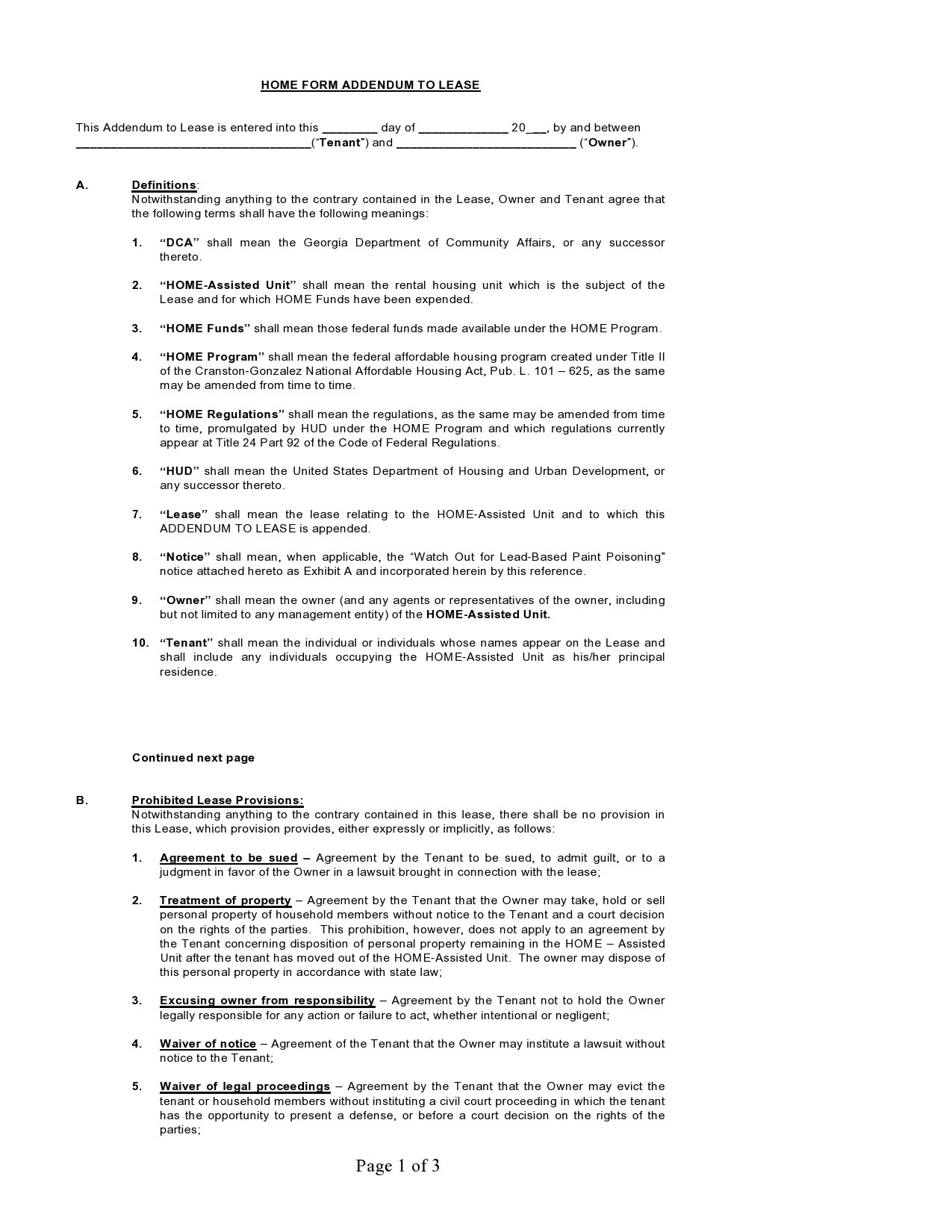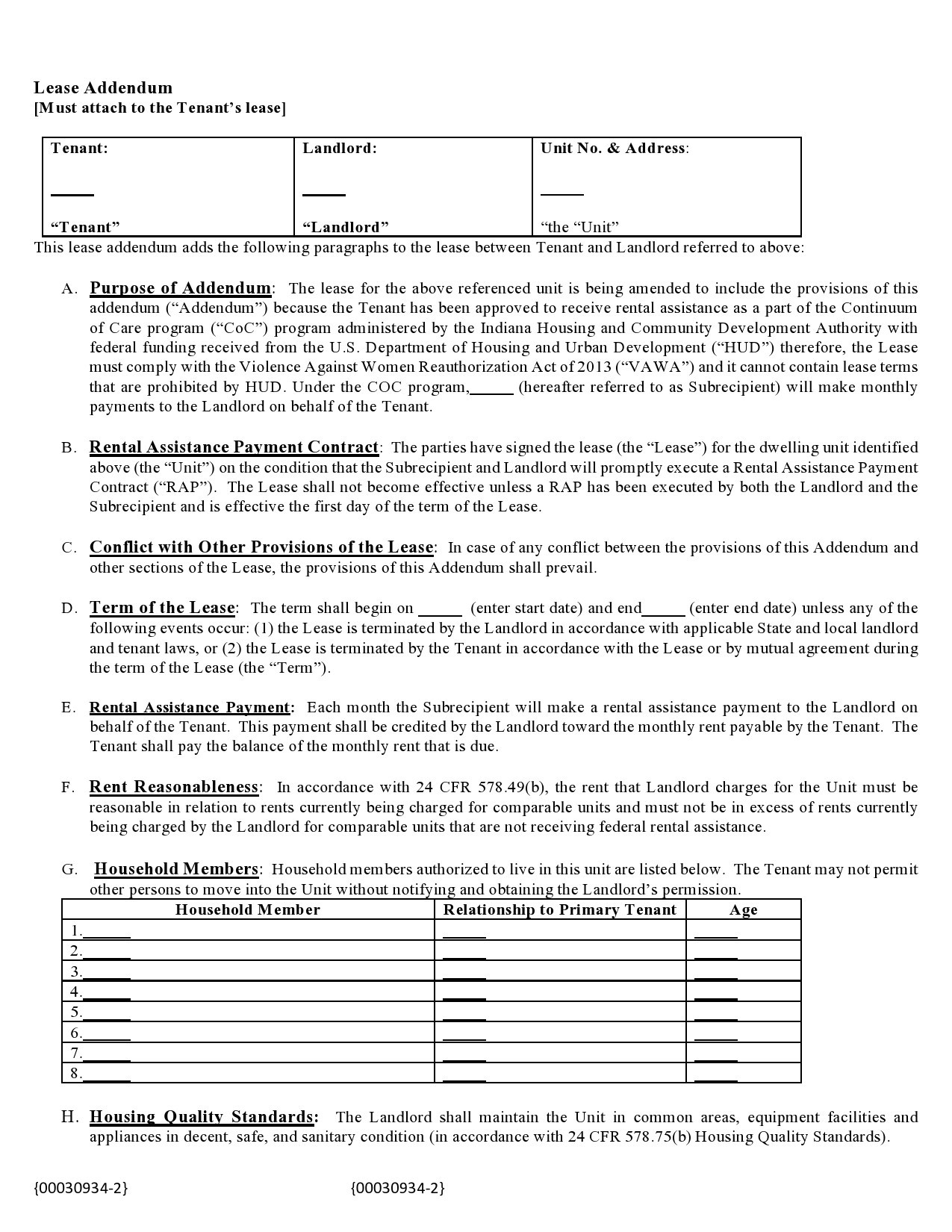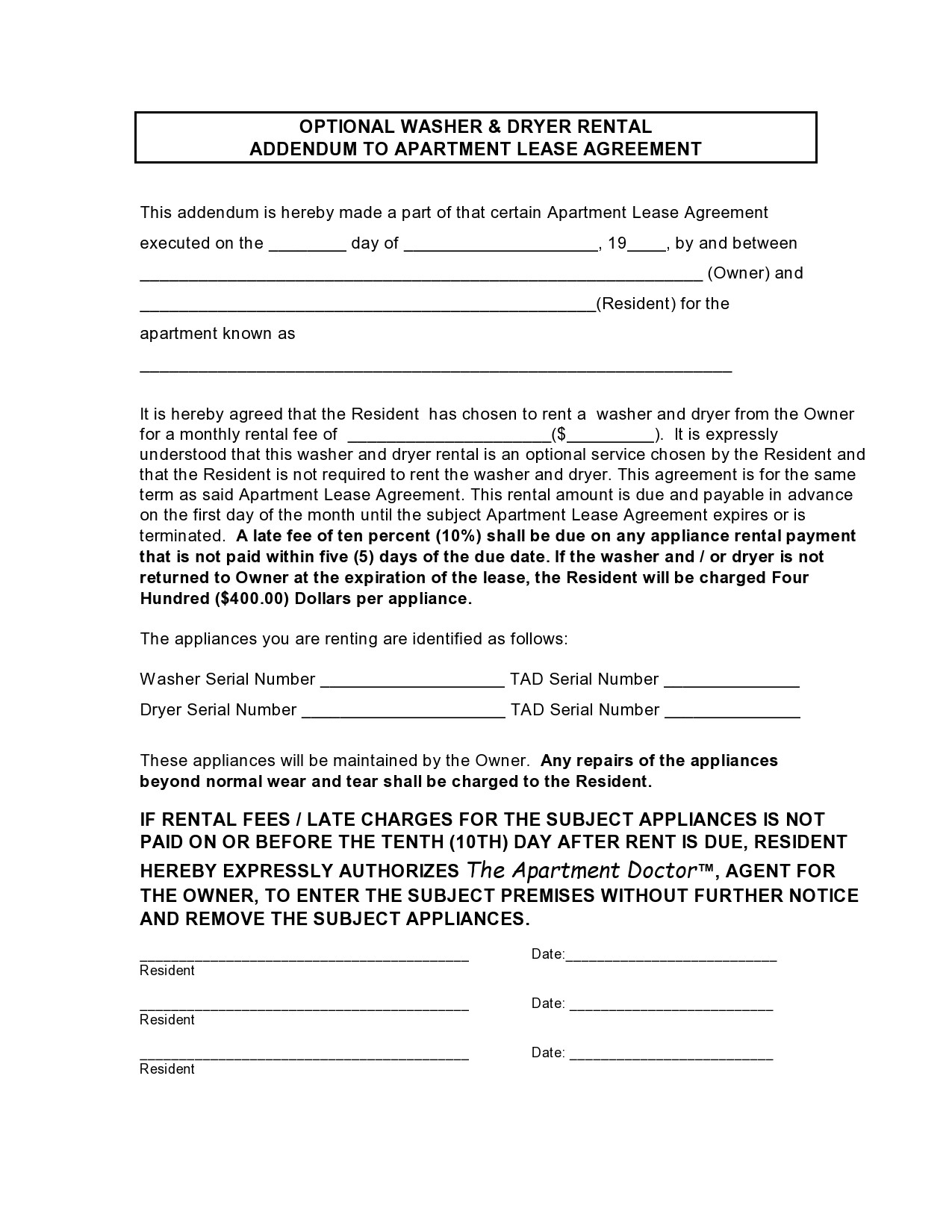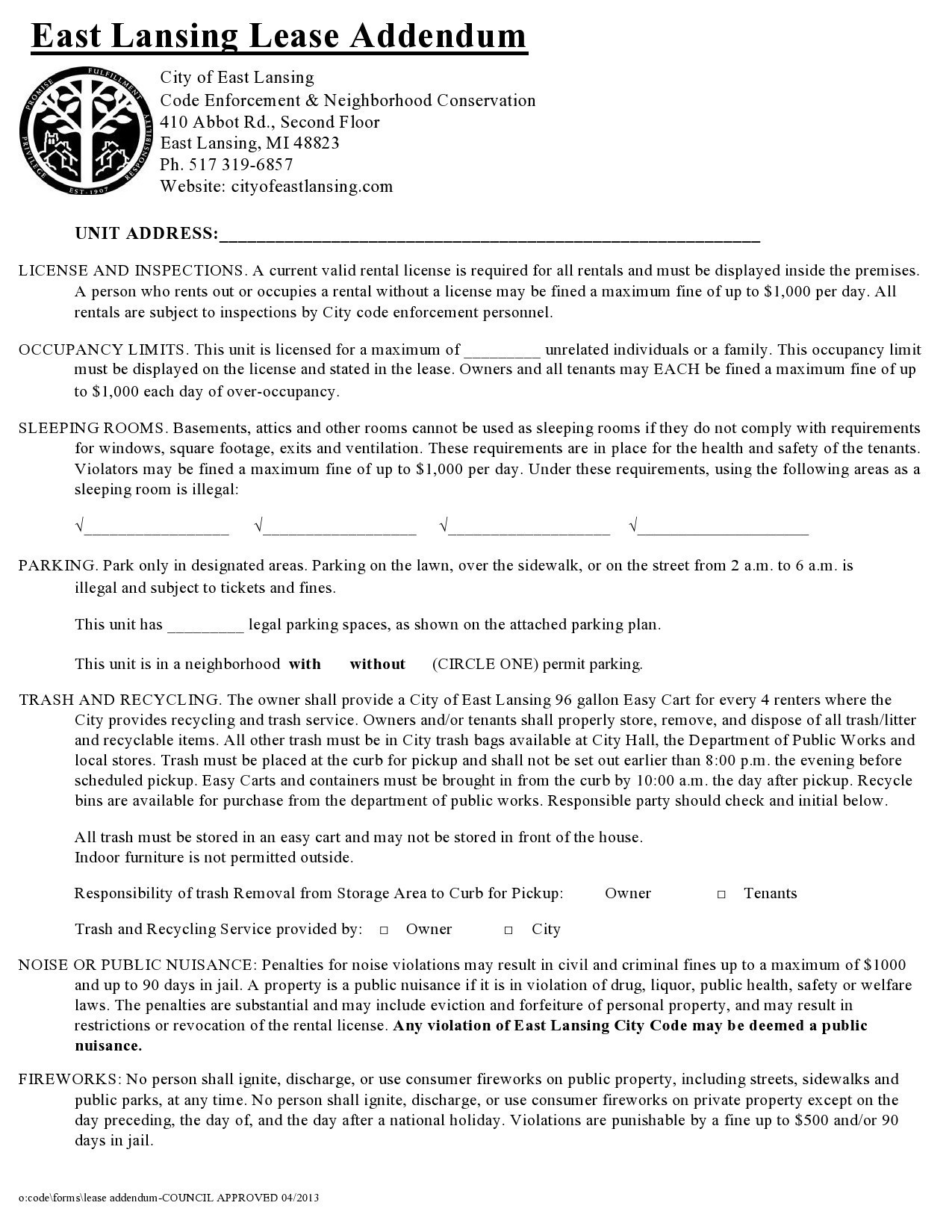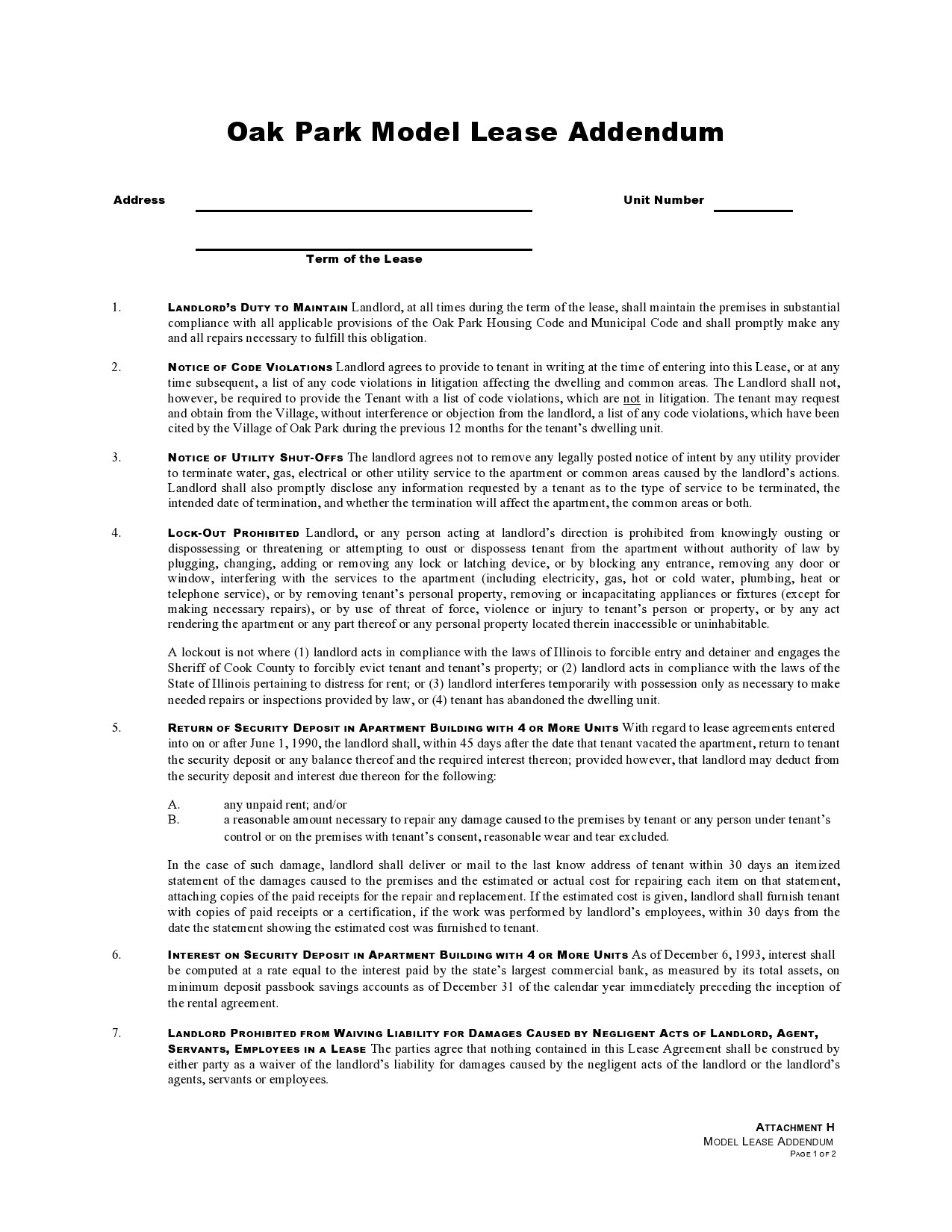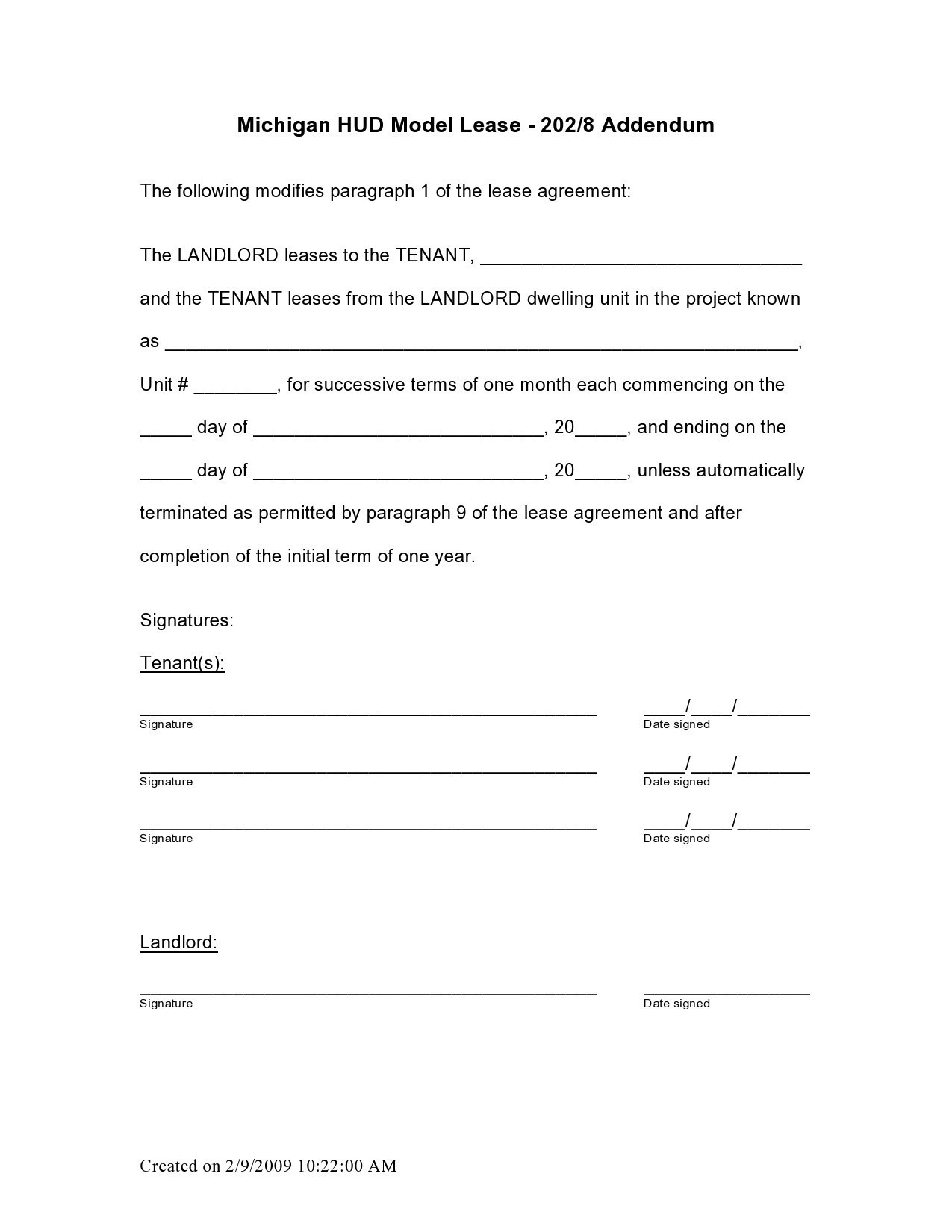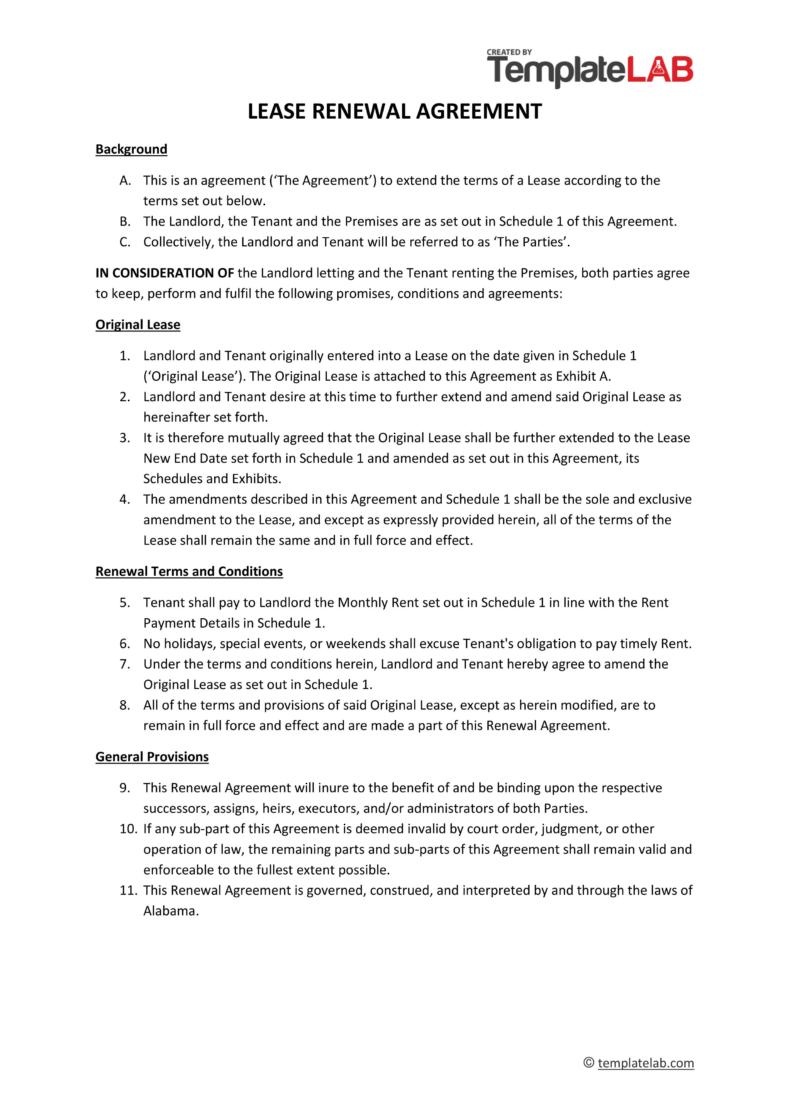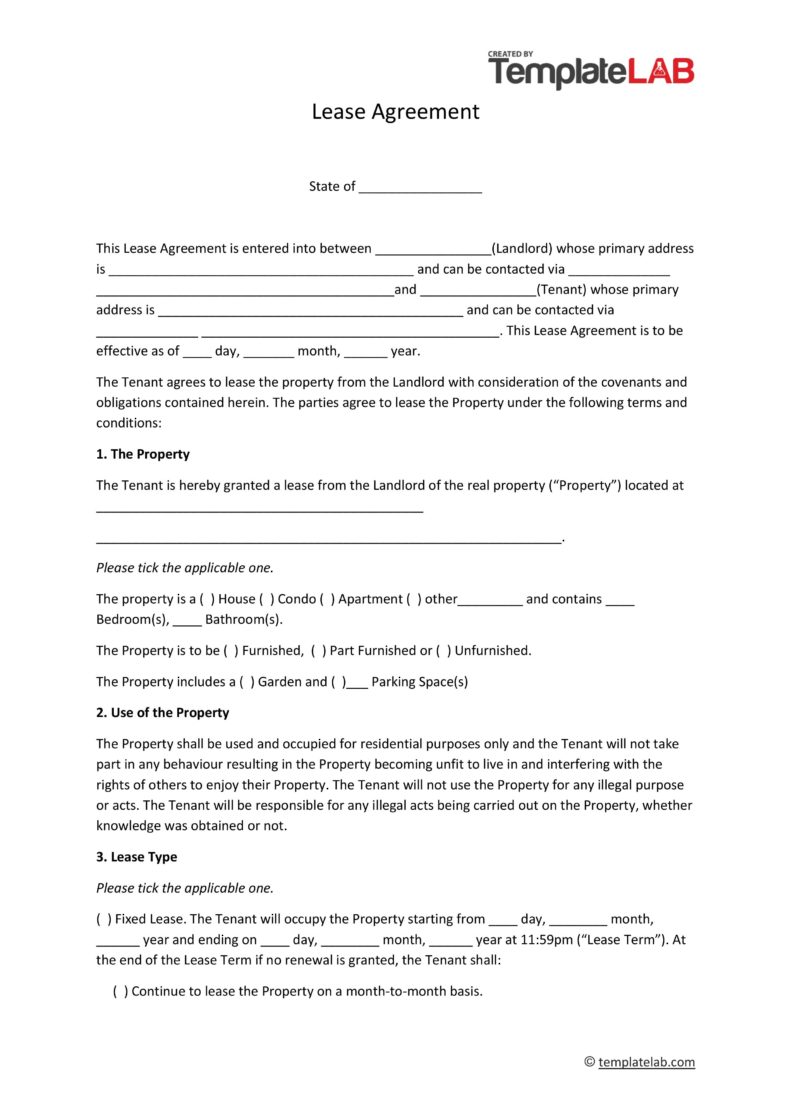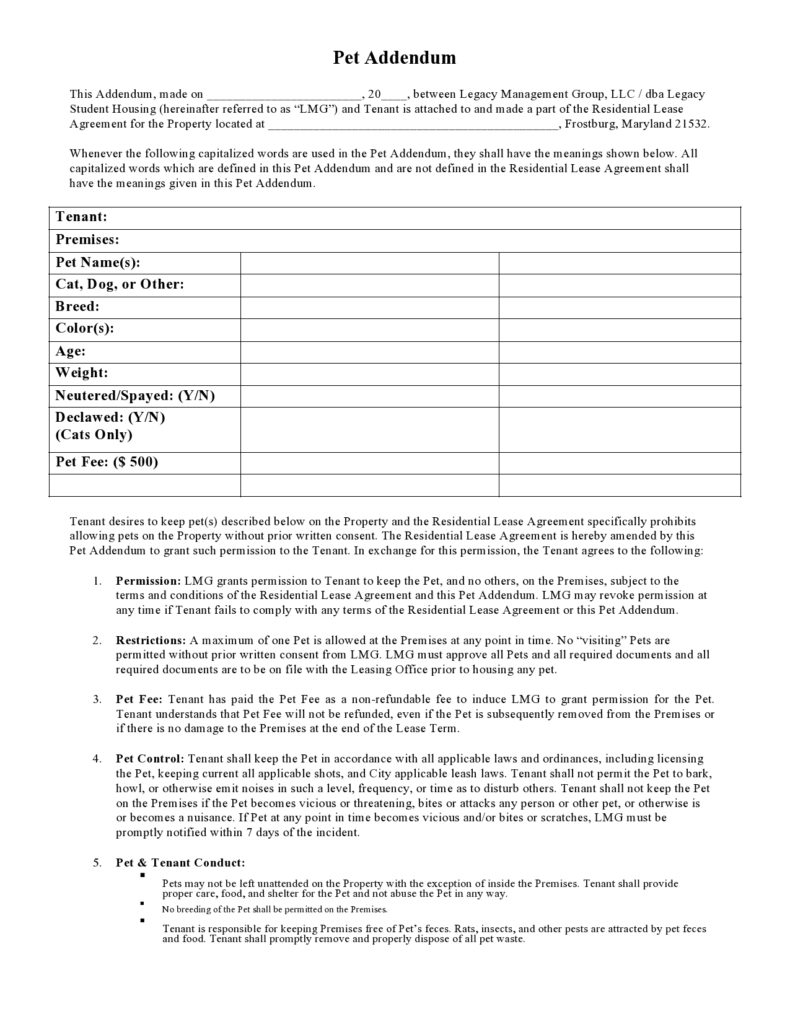A lease addendum is simply a legal document that allows the landlord to make changes or add additional information to the original lease agreement. Instead of the landlord and tenant having to create a brand new lease agreement, an addendum can be added to the original lease. This addendum should outline any modifications that both parties will need to sign.
Table of Contents
- 1 Lease Addendum Templates
- 2 What is a Lease Addendum?
- 3 Rent Addendum
- 4 When Should Addendums Be Added to a Lease Agreement?
- 5 Common Types of Rental Addendums
- 6 Lease Addendum Forms
- 7 How to Add an Addendum to a Lease?
- 8 What Should be Included in the Addendum?
- 9 Addendum to a Rental Agreement
- 10 Who Needs to Sign the Lease Addendum?
- 11 What is a Provision in a Lease?
- 12 FAQ’s
Once the landlord has created the lease addendum, the tenant has a chance to look it over and decide whether they agree with the terms or not. Negotiations will sometimes happen before the final document is done. The landlord and tenant will need to sign the document and then it becomes part of the original lease.
Lease Addendum Templates
By State
What is a Lease Addendum?
When a tenant moves into a new rental property, they will need to sign a lease form that states all of the rules they must follow for being in that property. It can also list out the responsibilities that the landlord must follow for the tenant. This is signed before the tenant moves in to ensure both parties are on the same side.
But what happens when there is a change in the lease? Whether the tenant would like to propose a change or the landlord needs something added or taken out, a lease addendum can be a good tool to make this happen. The lease addendum is going to be a legal document you can use that helps add terms to the original rental agreement. It is common for these to add in information that wasn’t covered in the original lease.
There are several benefits to the landlord when it comes to a lease addendum, which is why they would like to do this in the first place. Some of the benefits include:
- Provide legal protections: A lease agreement may not cover each situation that shows up. The landlord can use the addendum to help out if they find there is an issue to help protect them.
- Make tenant accommodations: It is possible that the landlord is going to make some new accommodations for the tenant. It may let the tenant paint some of the rooms, have a pet if they need it, or something else.
- Simplify templates: If the original lease is a mess, the addendum can help clear up some of the information so it makes more sense. This allows more flexibility for the landlord compared to some of the other methods or compared to making a whole new lease.
The tenant may also be able to benefit from a lease addendum being added to their original lease. While it is most common for the landlord to make the changes, it is also possible that the tenant can make some suggestions in the addendum as well.
Rent Addendum
When Should Addendums Be Added to a Lease Agreement?
There are a lot of situations where a lease agreement will need an addendum added in. Often it is done to make some changes to the original lease or to clarify things if there is some confusion. Some of the situations where this can be done include:
- Clearing up some of the rules about roommates and whether a new roommate can move in and when.
- Adding in a new tenant or even a new cosigner on the original lease.
- Making some modifications to the original lease in some manner.
- Being open to a special request from the tenant
- Authorizing tenants to do a special task, like parking in a designated garage.
- Addressing the rules and regulations around pets
There are a lot of different lease addendums that can be added to the original lease. As long as the change is considered legal in your area and the tenant and landlord agree to the changes, you can add it in as an addendum as well.
Common Types of Rental Addendums
A landlord will be able to use a lot of different addendums and finding a lease addendum template for the reason they would like to write this one can make all of the difference. Some of the common types of rental addendums include:
- Pet addendums
- Co-signer addendum
- Swimming pool addendum
- Housekeeping addendum
- Snow and ice removal
- Internet access addendum
- Garage rental addendum
- Condition of premises addendum
- A furnished apartment lease addendum
The exact addendum that is used for your property will depend on the agreement that the landlord and the tenant will make together. It all needs to be in writing, read by both parties, and signed before it is considered a legally binding document.
Lease Addendum Forms
How to Add an Addendum to a Lease?
Adding an addendum to your lease does not need to be difficult. The landlord may decide to talk with the tenant first before writing it up to ensure there are no problems and to negotiate the changes that will be made. Then both parties can sign it before adding to the original lease. Some of the steps to take to add an addendum to the original lease include:
- Speak with the tenant: Take the time to speak with the tenant and explain how the addendum affects the lease. An addendum can be made for a lot of reasons, such as adding or taking away a pet policy, changing the rent, and more. Discussing it with the tenant will make a difference.
- Tenant reviews the addendum: The landlord will be able to create the addendum before signing and dating. They will then send it over to the tenant to look over it. The tenant should read through the contents and ask any questions they may have.
- Sign and attach: Once the tenant signs the document, it will get attached to the original lease and the tenant and landlord must follow those rules for the duration of the agreement.
Depending on the changes that are added to the addendum, this process can be simple for most. It will then become a normal part of the regular lease.
What Should be Included in the Addendum?
The addendum to the lease is meant to be a legally binding document that attaches to the original lease. The tenant will need to fill out the addendum and agree to the changes in order to make it part of the lease and for it to become valid.
As a legal document, there are many components that need to come into play to ensure that the document is legally binding and includes the right information. Some of the components to add include:
- The addendum date: This will be the formal date of the addendum.
- Landlord name: The landlord must have their full name on the document at the top.
- Address of the landlord: The landlord must include an address where the tenant is able to reach them.
- Tenant name: Add the name of each legal tenant to the property. You do not need to include children who reside there with their children.
- Address of tenant: Add in a space for the current mailing address of the tenant, which is often the same as the rental property address.
- Lease date: This can be found on the original lease the landlord and tenant signed. You must locate the original lease and then transcribe it to this part of the lease addendum.
- Address of the leased property: Make sure that there is a space for the physical address of the property.
- Amended conditions: Now it is time for the landlord to list out the amendments they would like to have on the original lease. If more than one is being proposed here, then you need to add them in at this time.
- Landlord name and signature: These will show that the landlord approves the addendum. The landlord should also include the current calendar date.
- Tenant signature, printed name, and date: This will show that the tenant has read through and agree with the addendum.
All of these parts need to be present in order to show that both parties are on board with the addendum and have had time to read through them and agree to them as well. The tenant will need to look through the addendum to see what the changes are and negotiate if they need that change.
Addendum to a Rental Agreement
Who Needs to Sign the Lease Addendum?
Both the landlord and the tenant need to sign the lease addendum, just like they do with the original lease. If one party does not sign the addendum, then it can’t be added to the original lease document and is not legally binding. The signature is going to show that both parties consent to the changes.
The landlord will often sign the addendum before sending it over for the tenant to look at. The tenant must look closely at the document and then decide whether they agree with it or not. If they sign the document before they look it over, it may be too late to make any changes.
What is a Provision in a Lease?
In most cases, provisions will be the specific clauses laid out in the original lease. Both the lease addendum and the original lease will sometimes include more than one provision on them, though the original lease is more likely to be longer than the addendum.
The provisions are often known as clauses. Each provision in a lease addendum or the lease agreement needs to be clear, short, and concise. This helps to build up trust and transparency and can make it easier for everyone to know what is listed in the agreement.
There are times when legal language will be necessary, depending on the state and the area. This will help them comply with landlord-tenant laws. Be sure to follow all of the applicable rules when you write any part of your lease to make sure that it is considered legal and will hold up in court if either the landlord or the tenant needs it.
FAQ’s
What is a business lease addendum?
A business lease addendum is similar to an addendum to the rental agreement you would do for an apartment. It just pertains to a business, rather than a residential living arrangement. If the landlord and a business tenant would like to extend the lease, change the lease amount, or change any of the other terms that are in the original lease, then they need to use a lease addendum template to help get it done.
What if the tenant refuses to sign the addendum?
If a tenant is presented with a lease addendum, and refuse to sign it, then the original lease agreement is going to be held to the original terms. For example, if the tenant does not sign to have a pet addendum in the lease, then they will not be able to have any pets on the property either.
What if the tenant breaks the addendum?
Once the tenant and landlord sign the addendum, the rules listed in the addendum need to be respected in the same way as the original lease. This means that if the landlord or the tenant breaks the lease or violates it, then it can be a breakable offense. This means that the tenant can be evicted from the dwelling if they do not follow that addendum. If the landlord does not uphold their part of the addendum, then the tenant can part ways and won’t have to pay the rent or fees for that time either.
Do I need to add a lease addendum form for each change?
It is good to get everything in writing. If you plan to change something about the original lease, putting it in writing and signing it, before adding it as an addendum to the lease, makes a lot of sense. When the landlord and tenant agree to make more than one change at a time, they can put it on one form and sign, rather than several forms. If the changes are spaced out over a few months or longer, then they each need their own addendum form to get it done.

